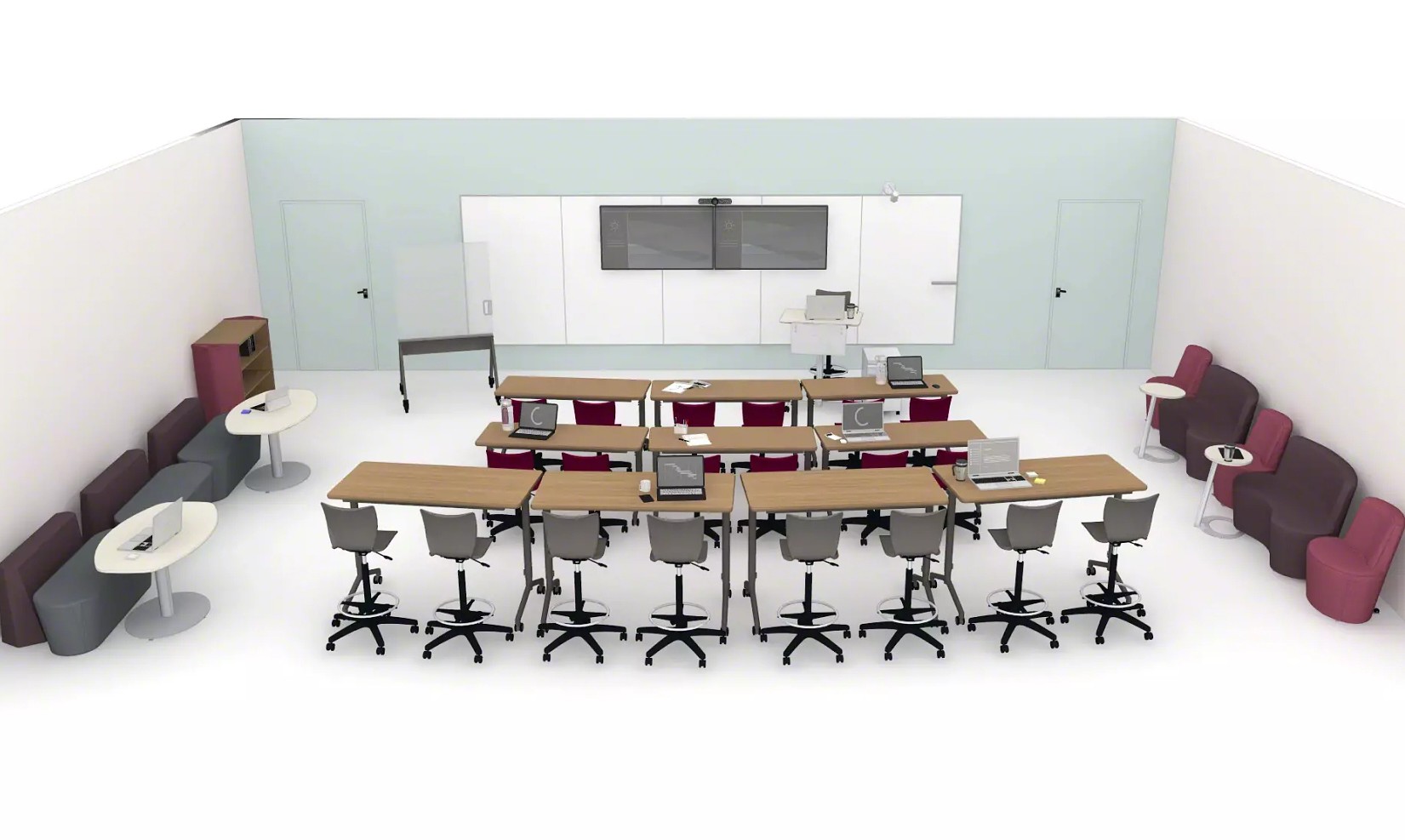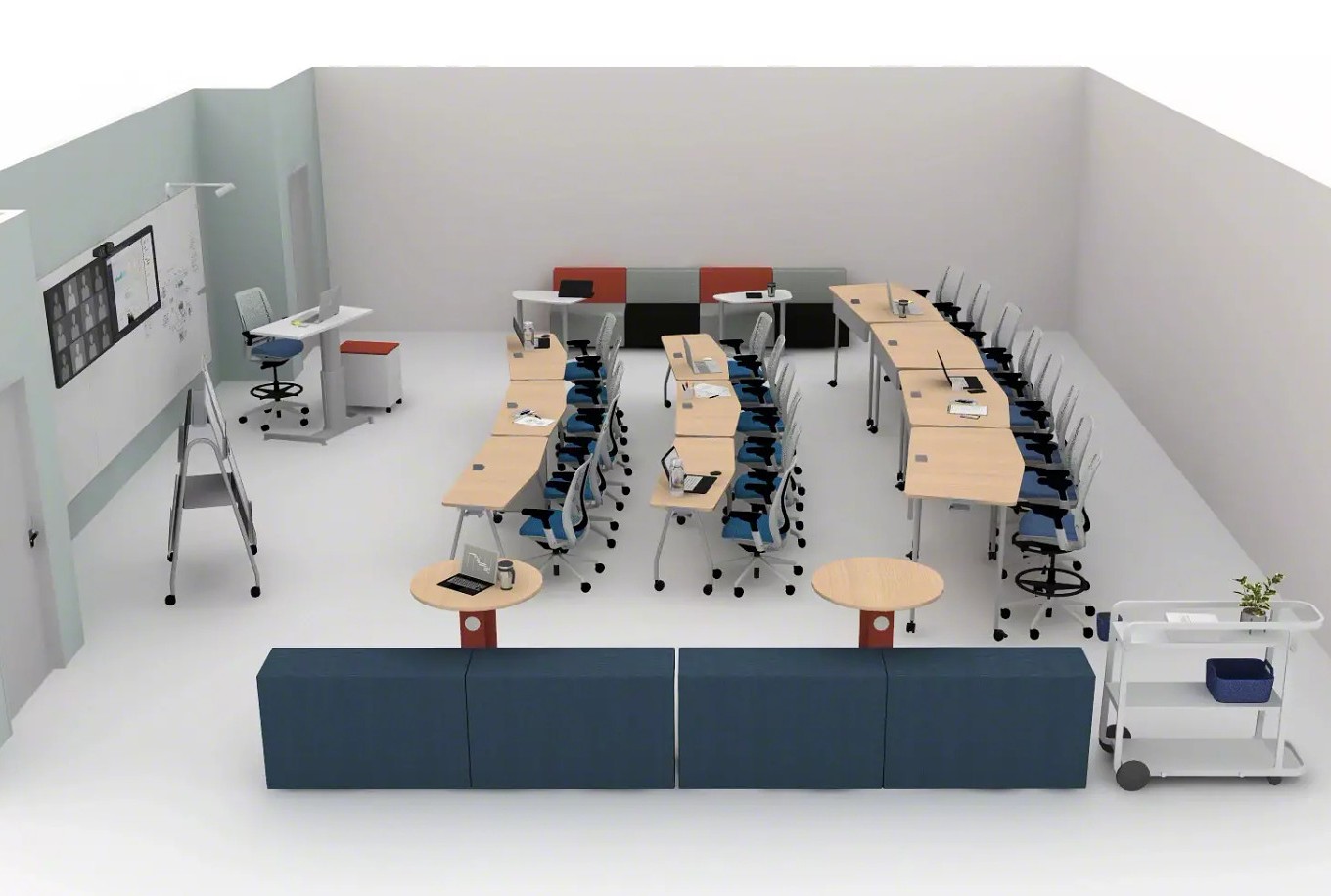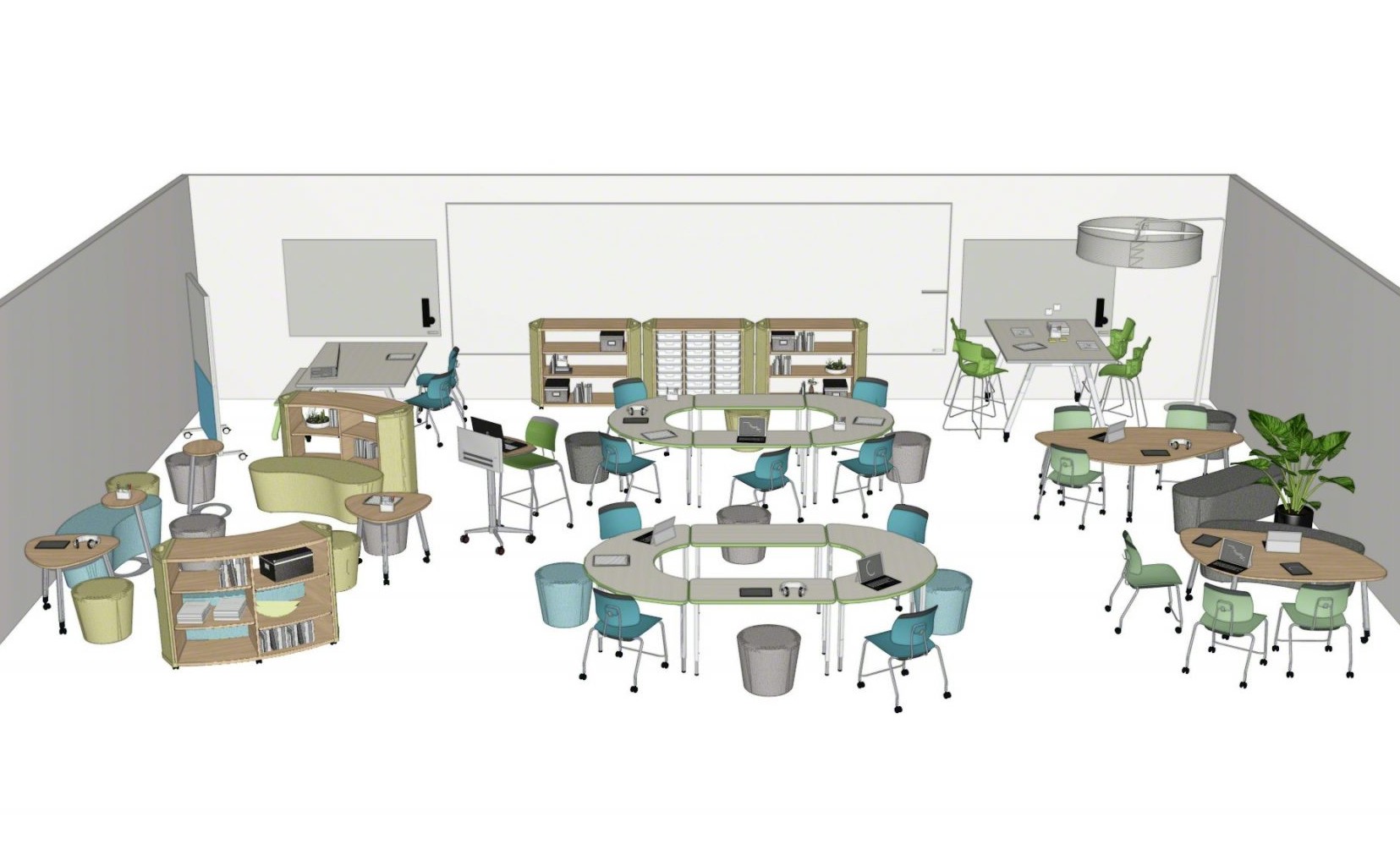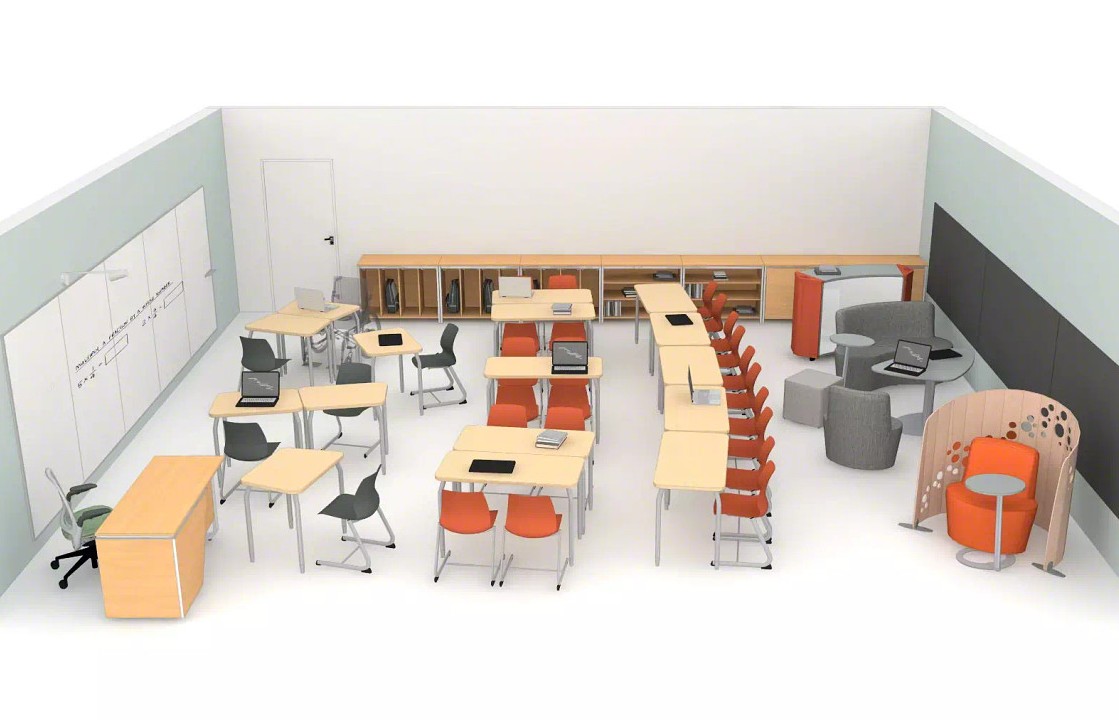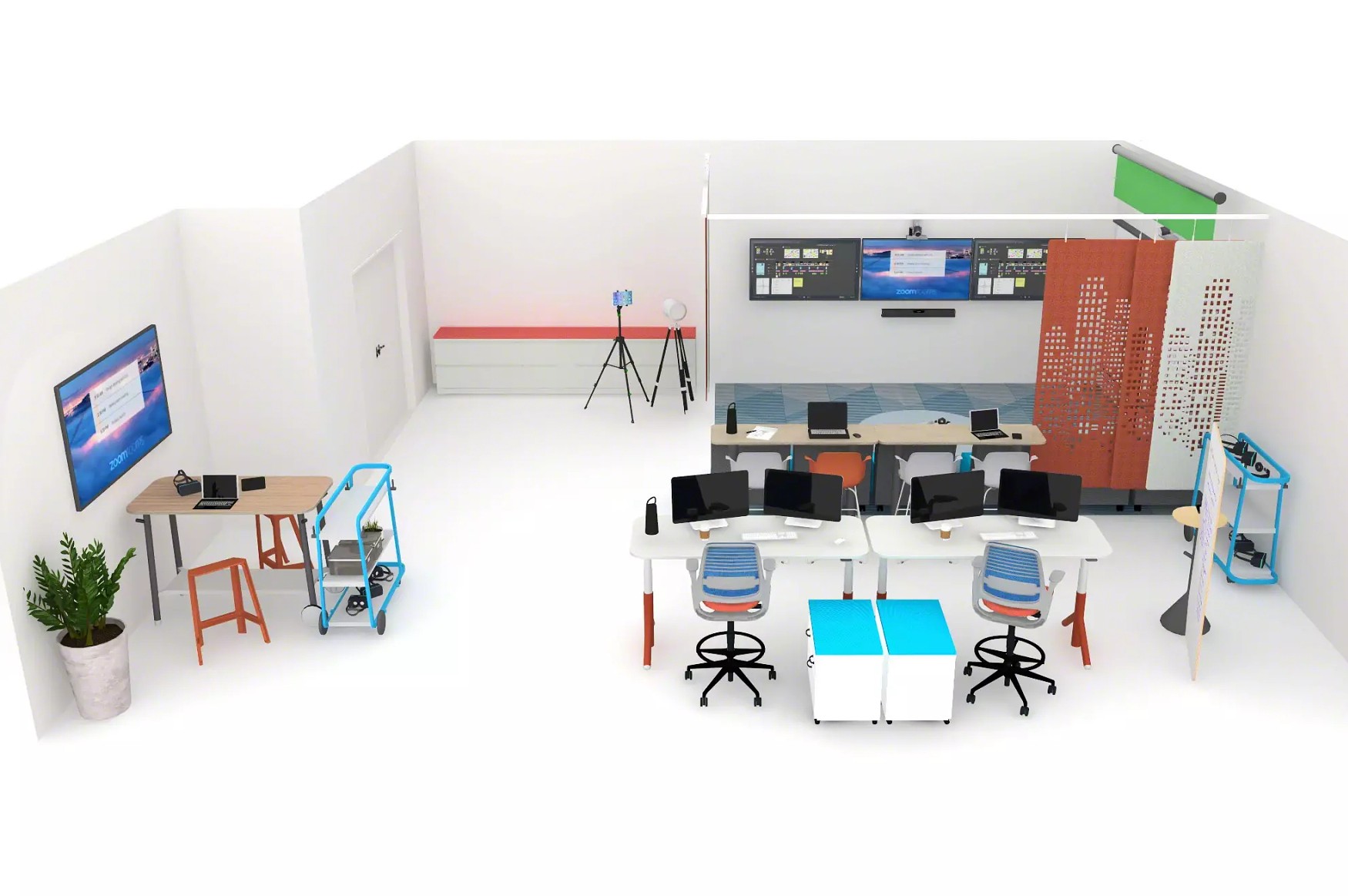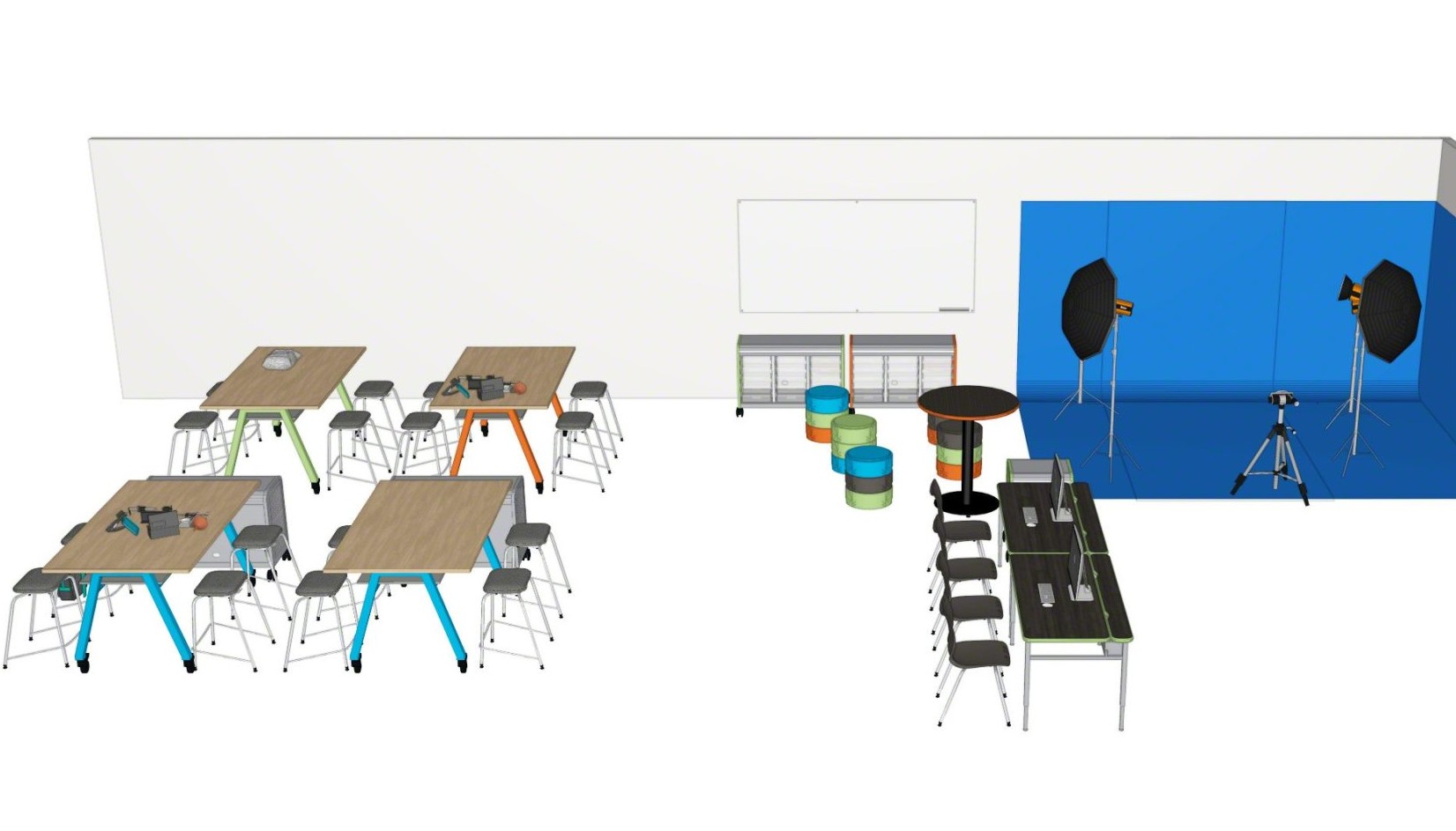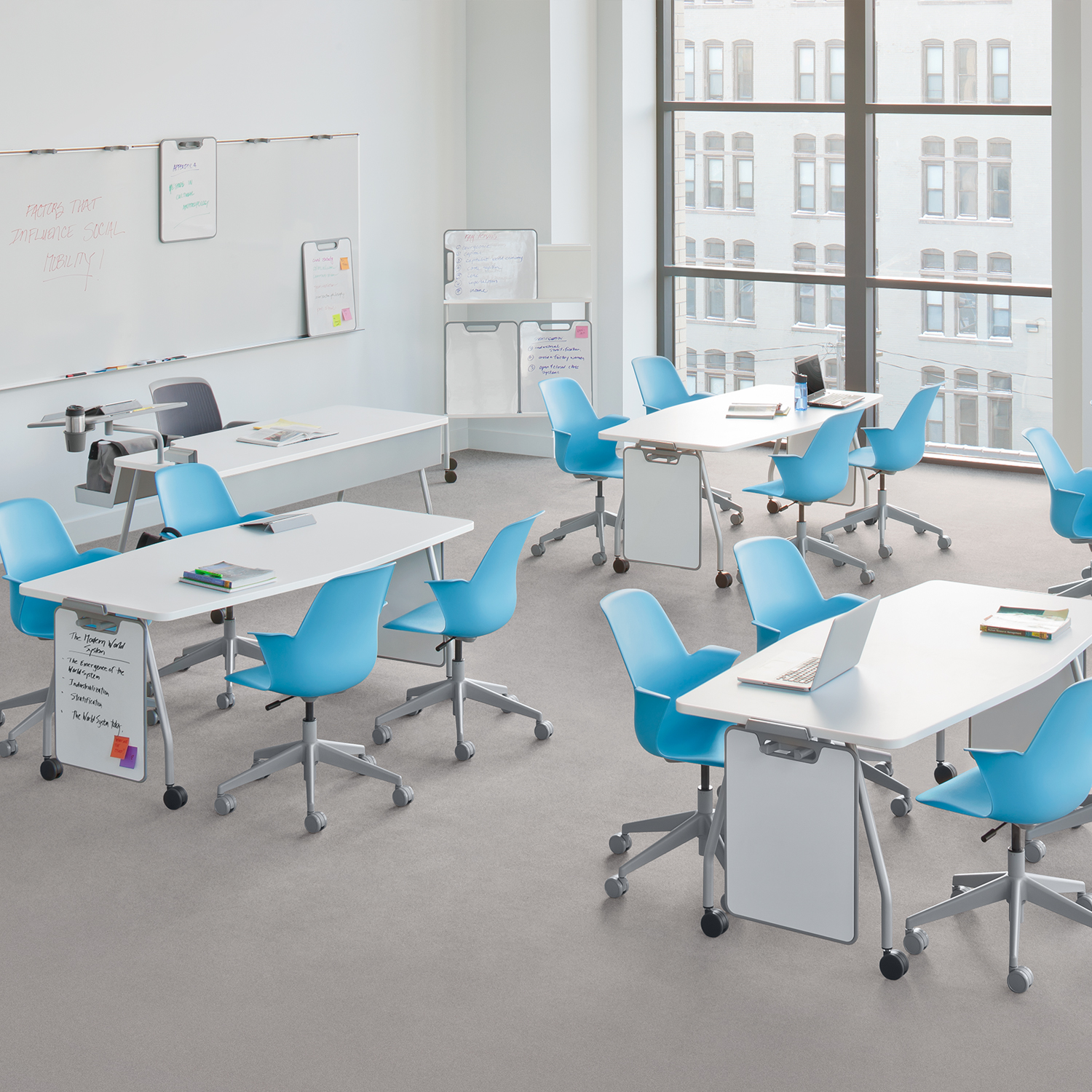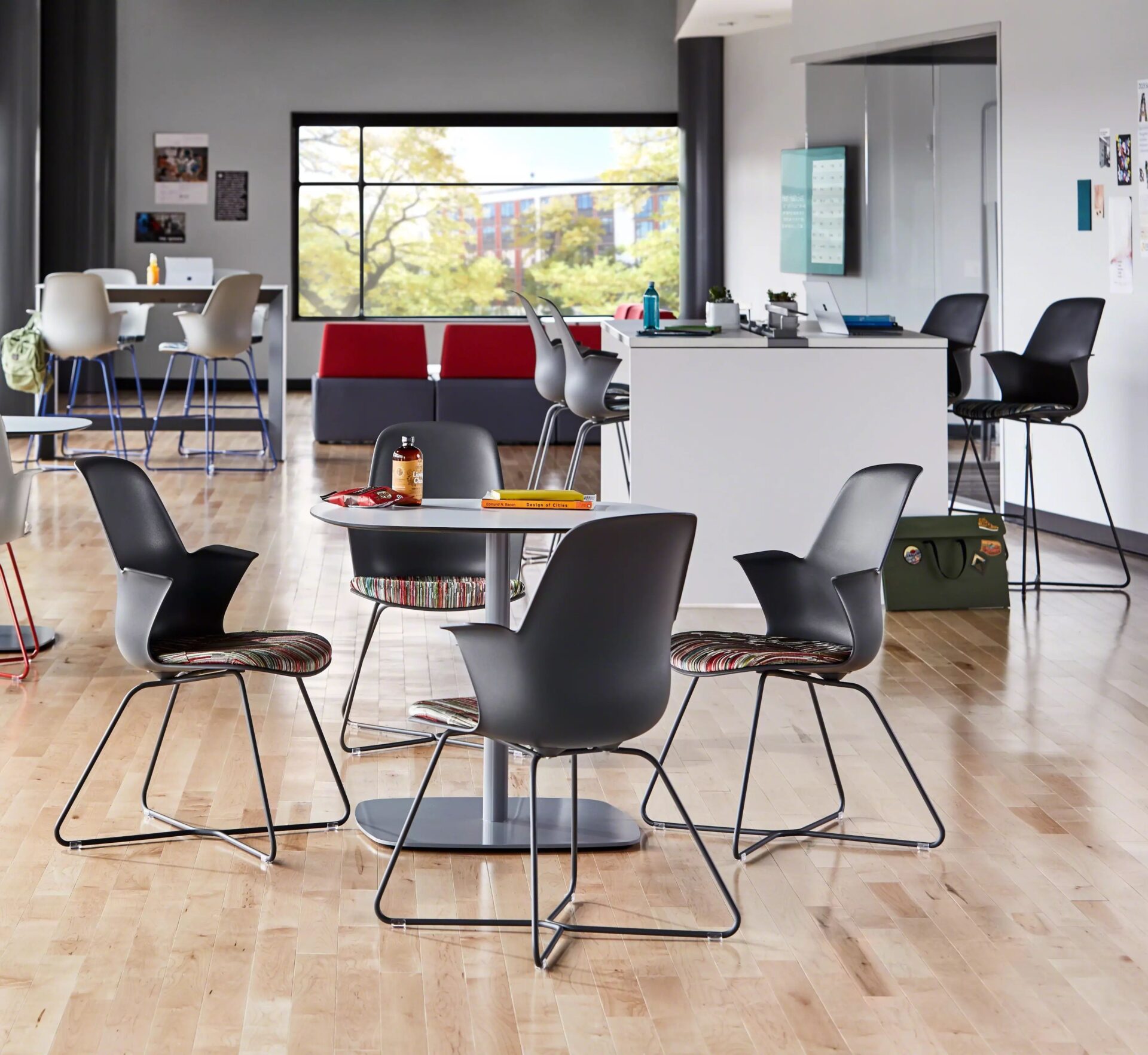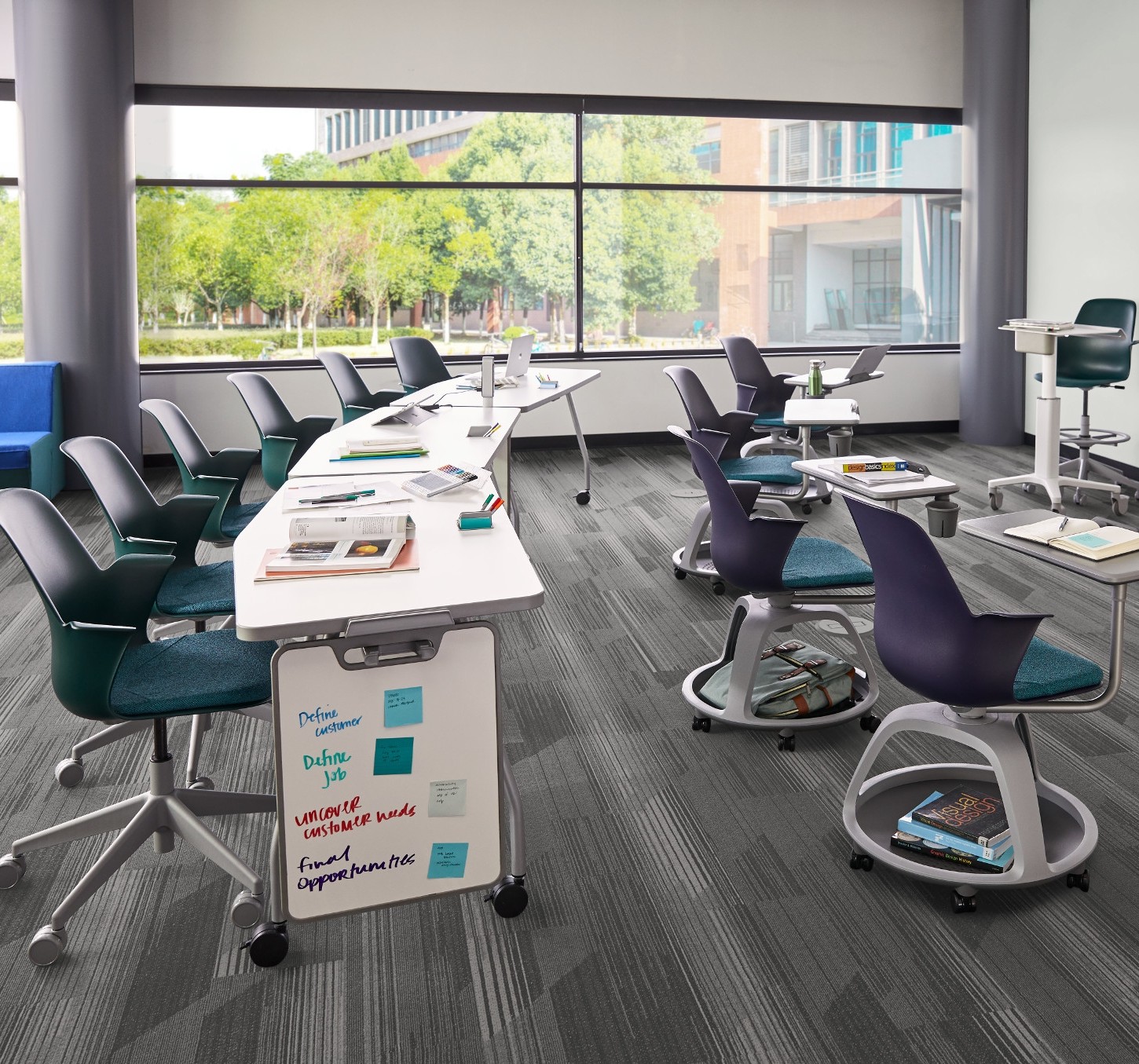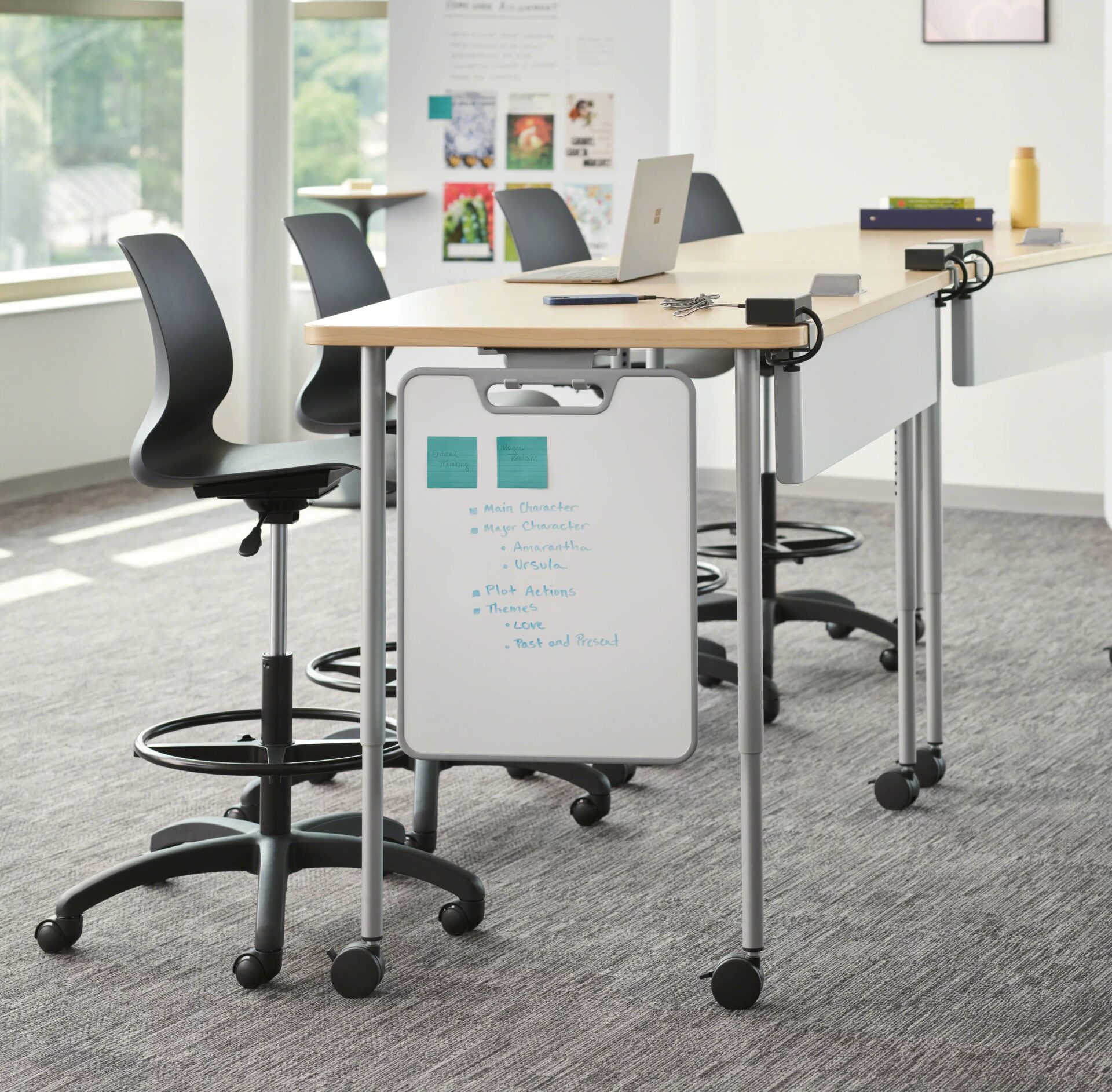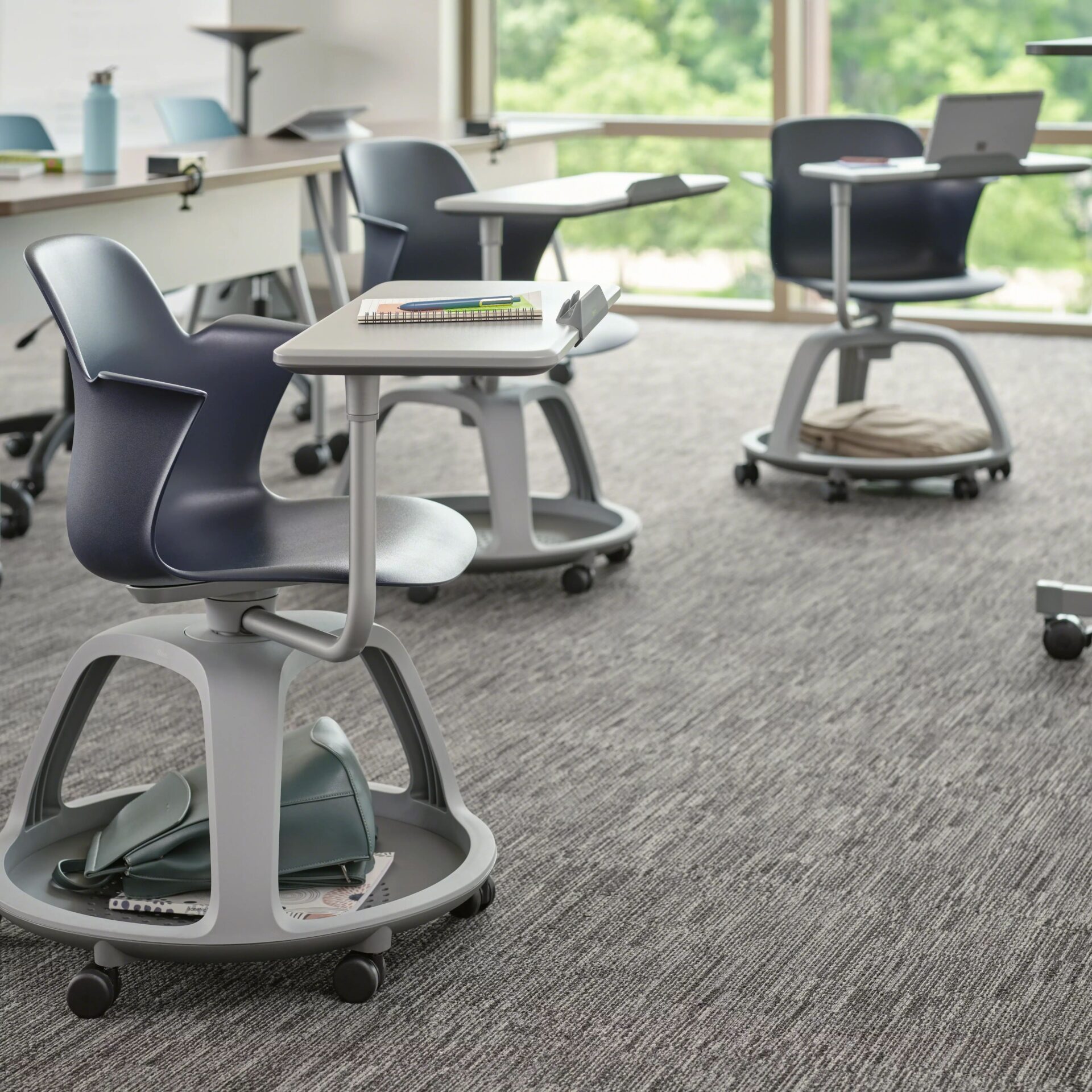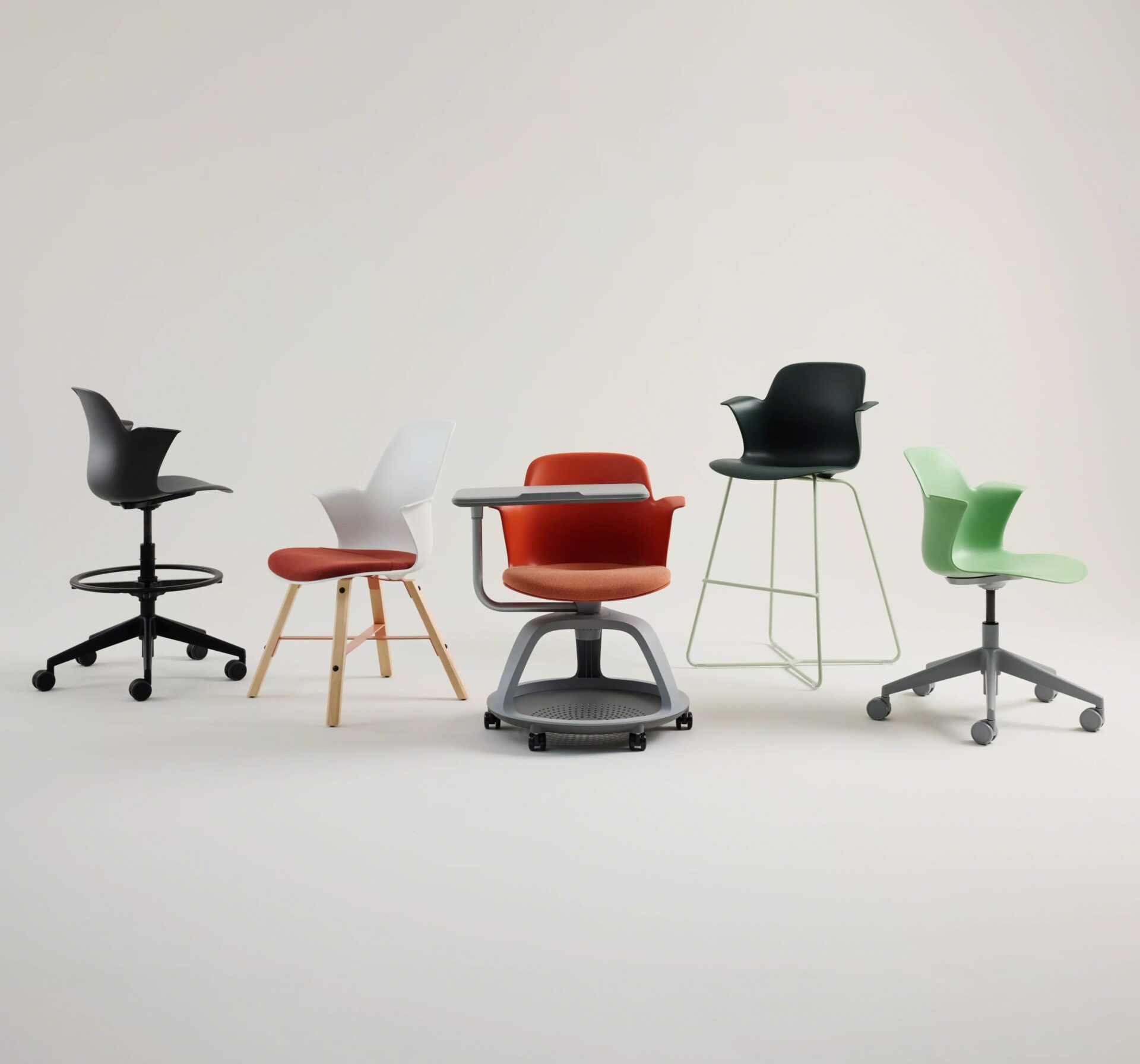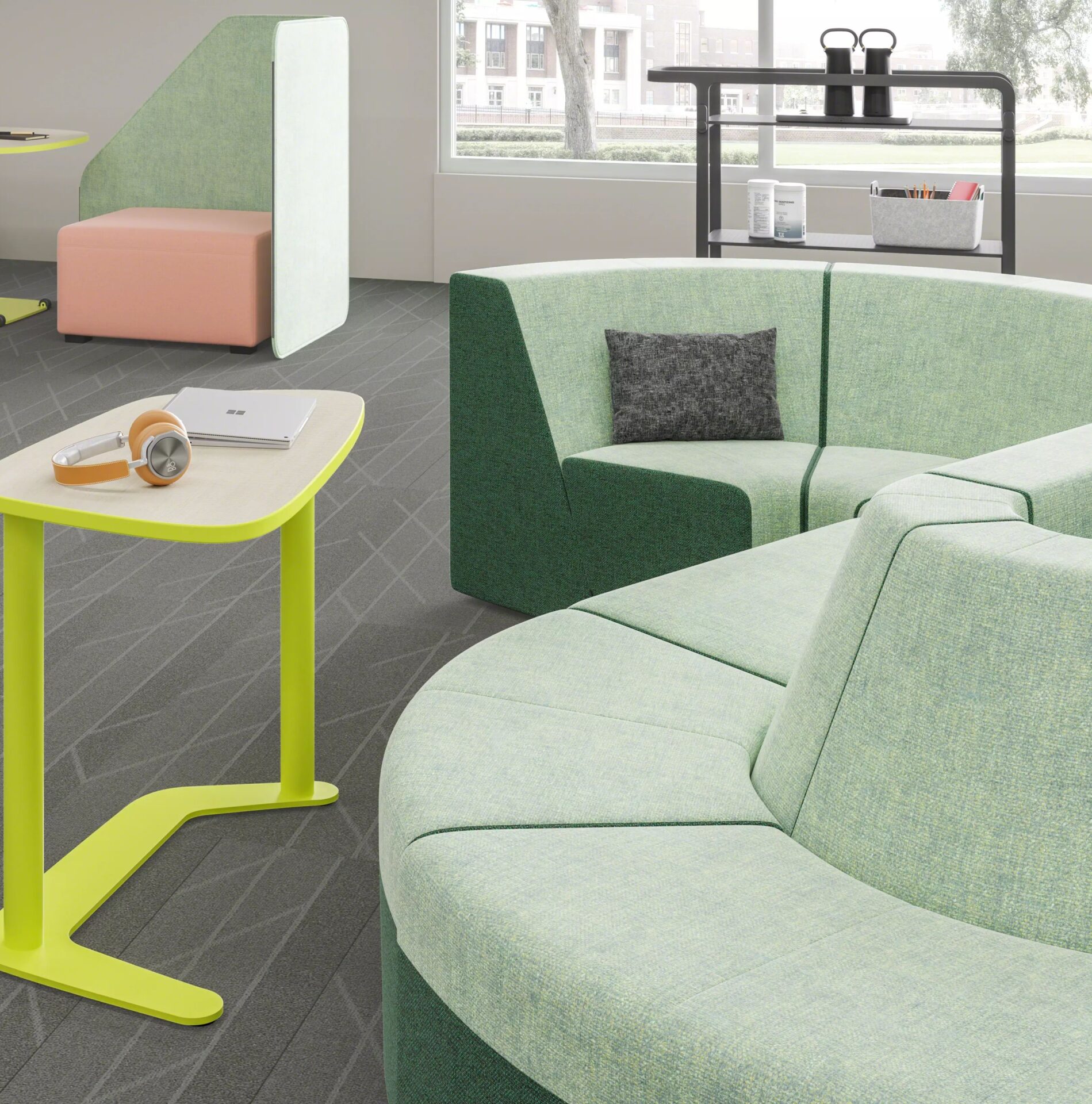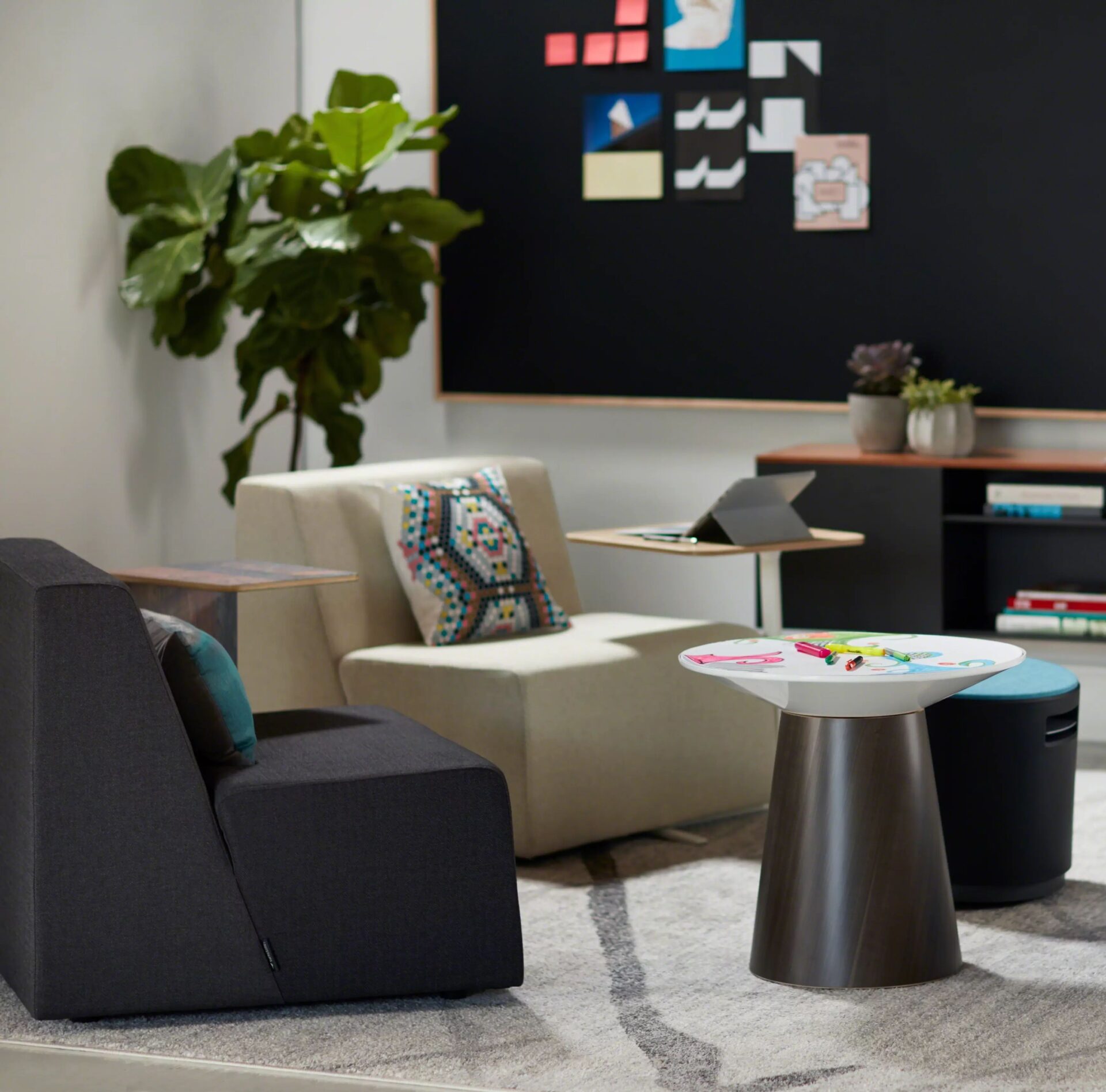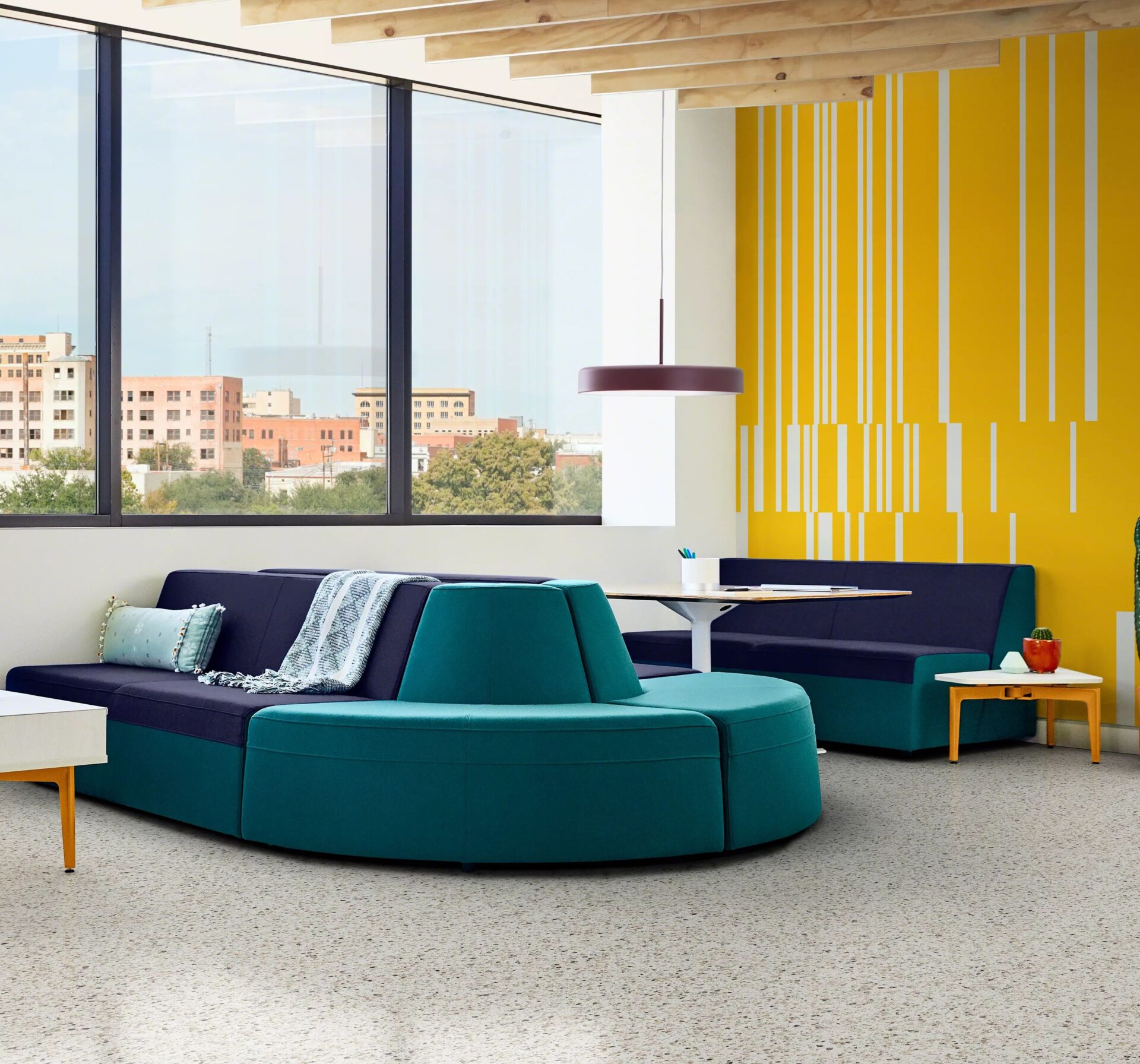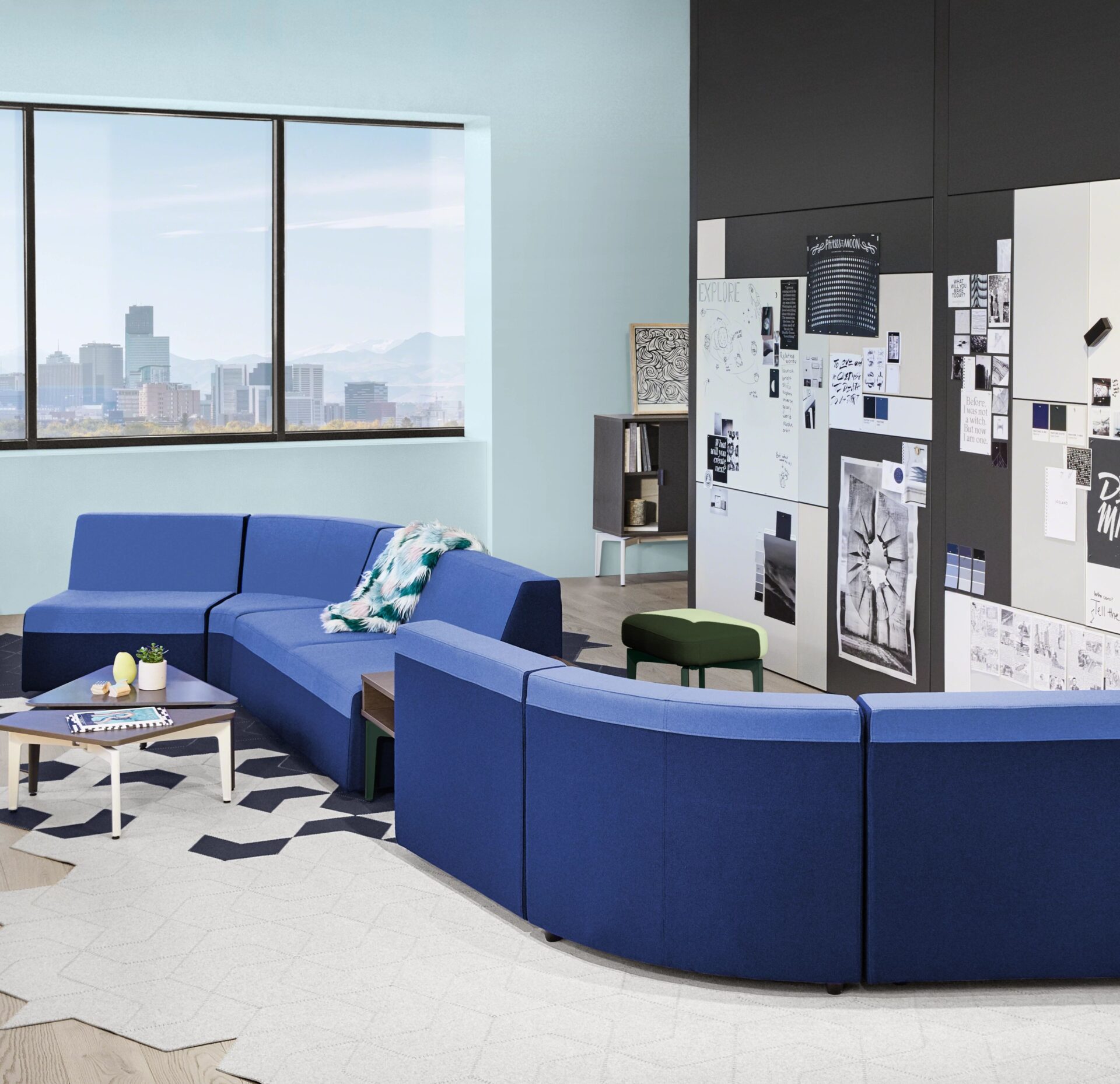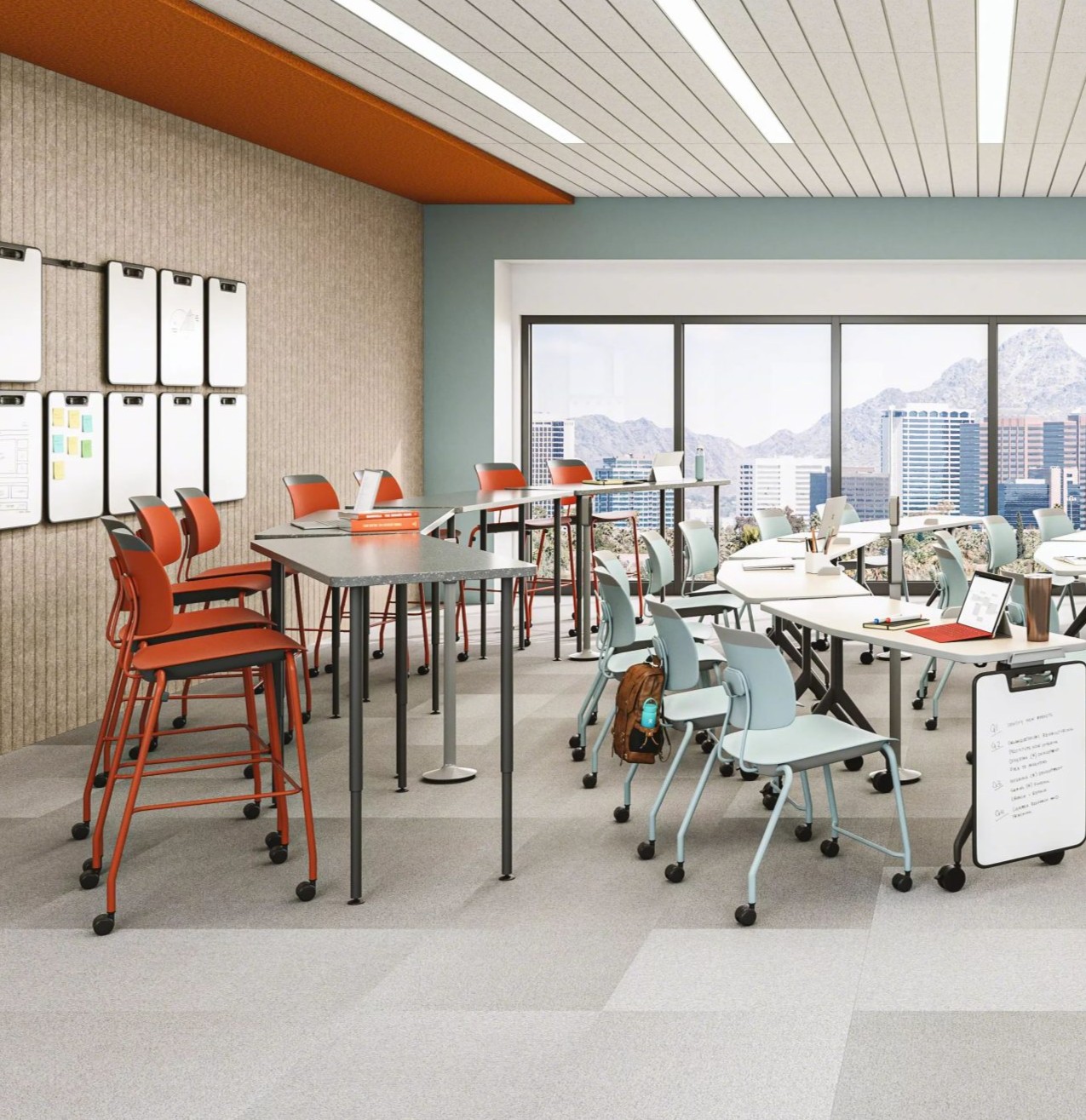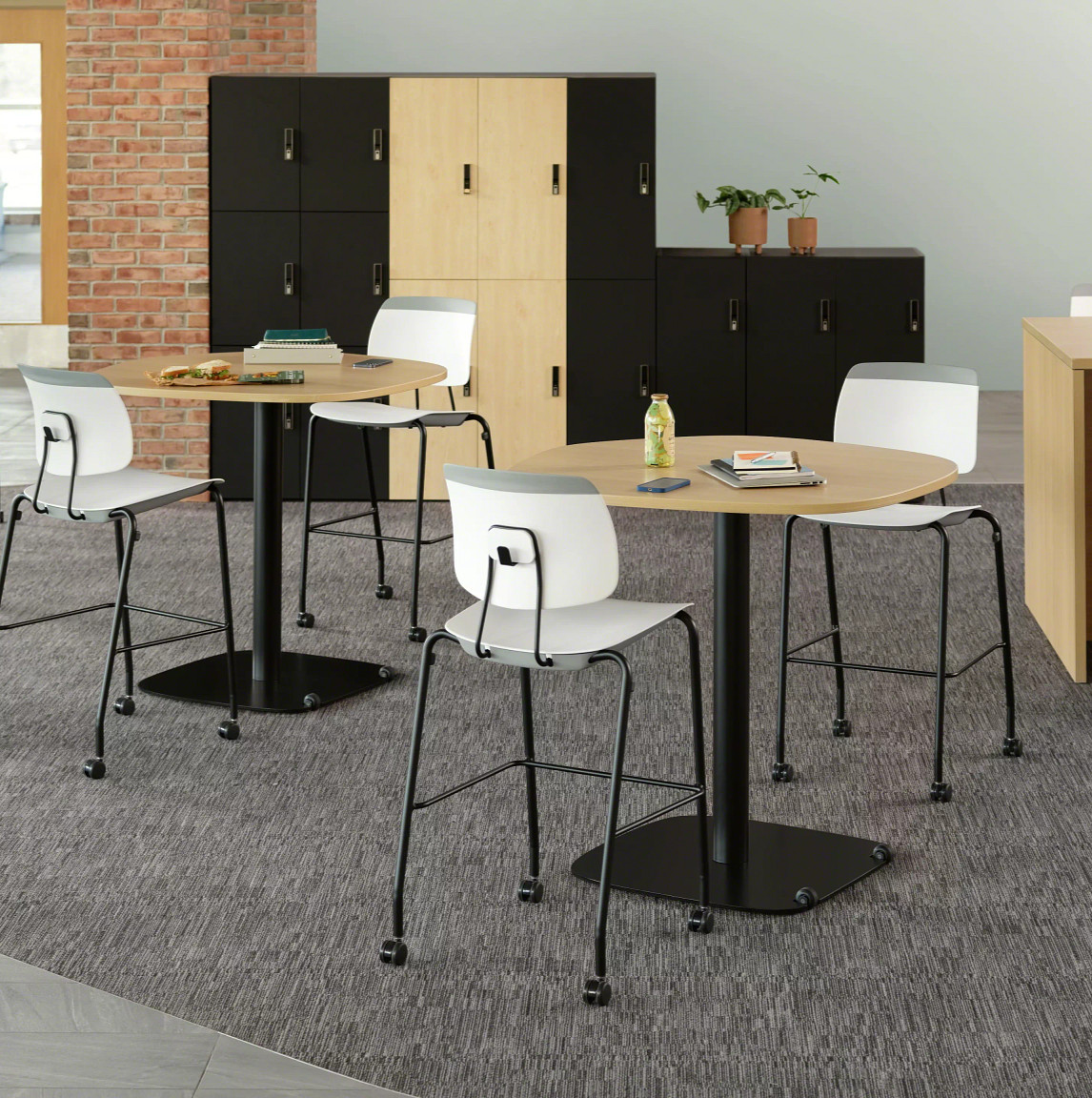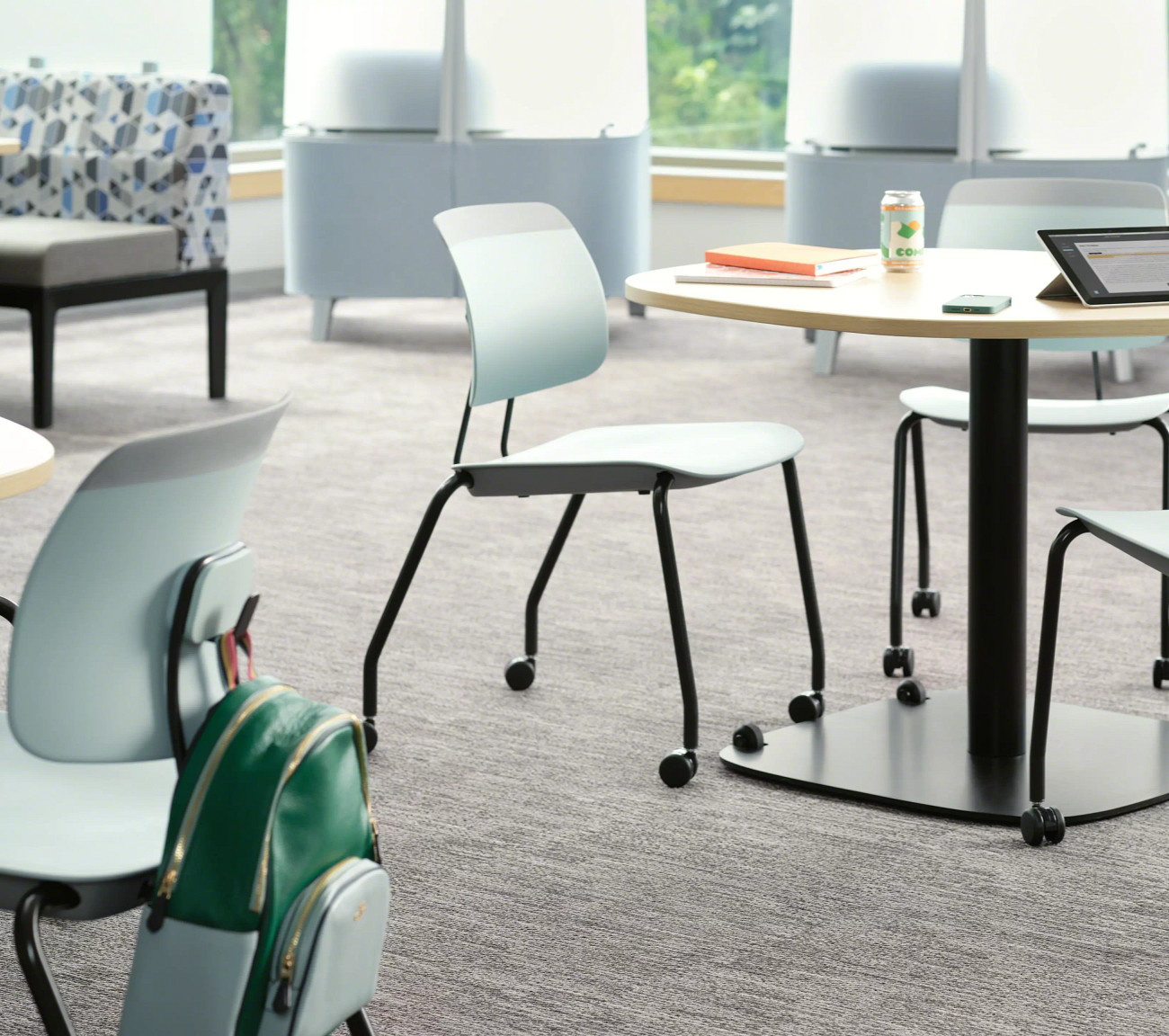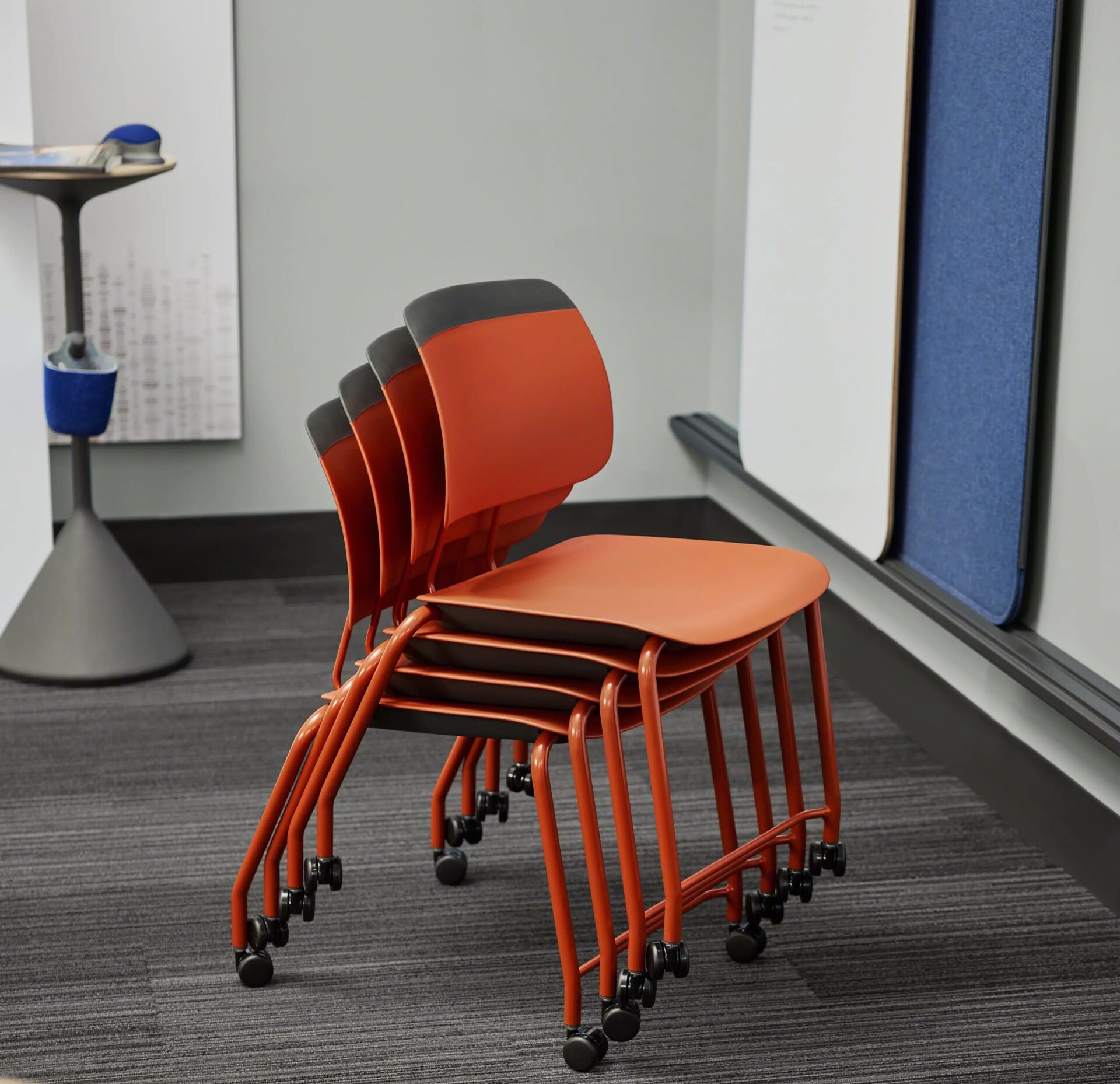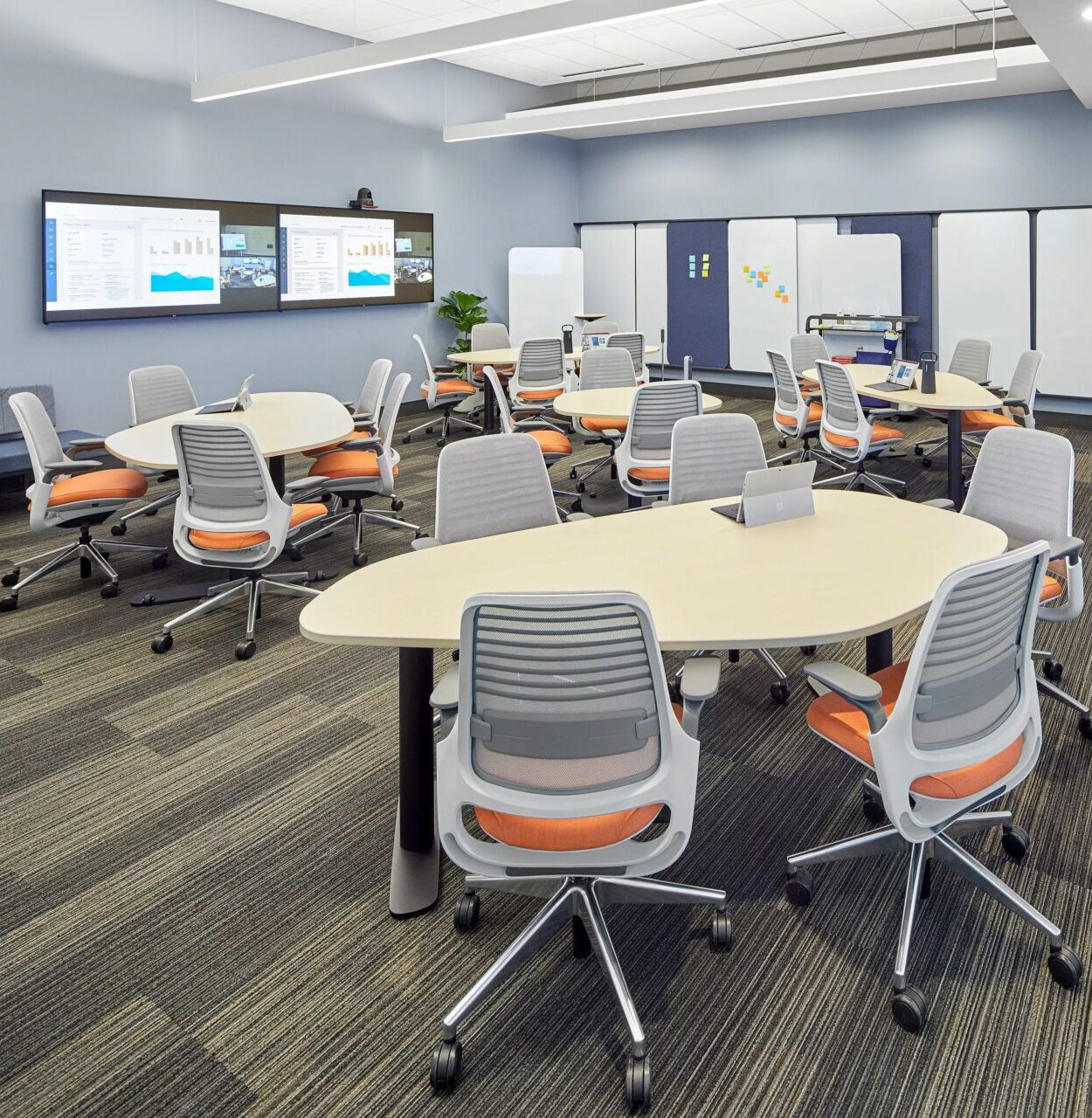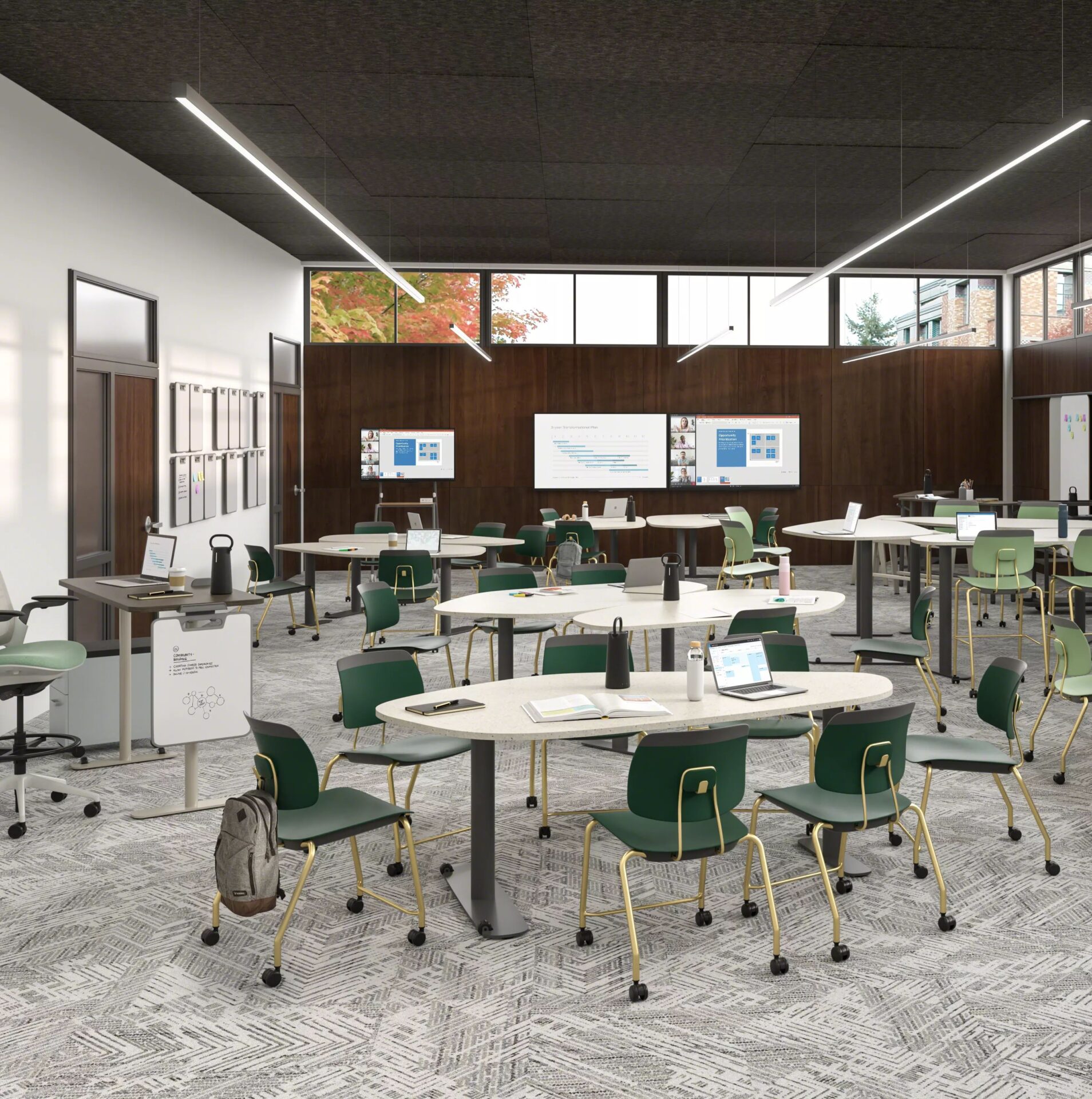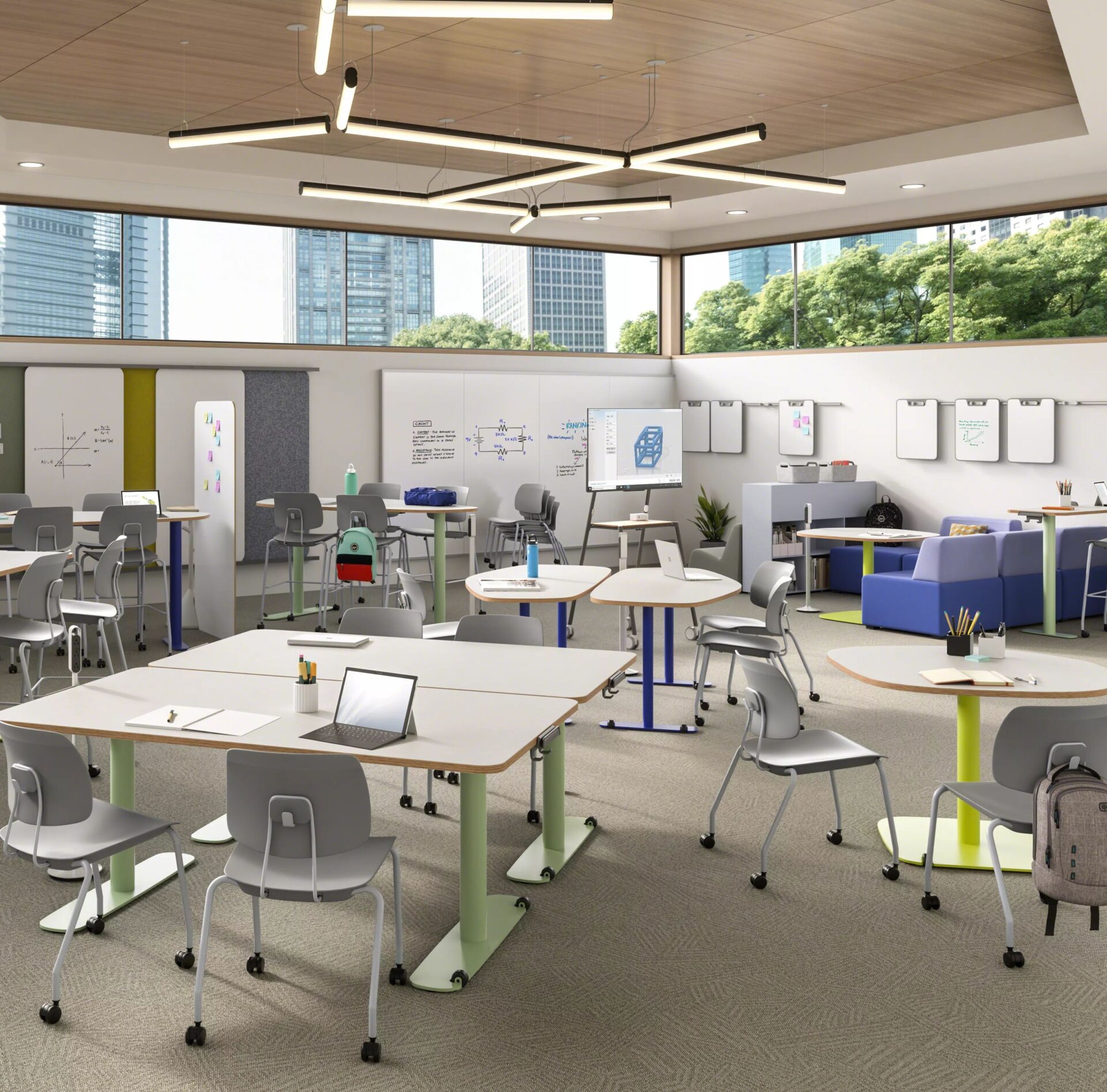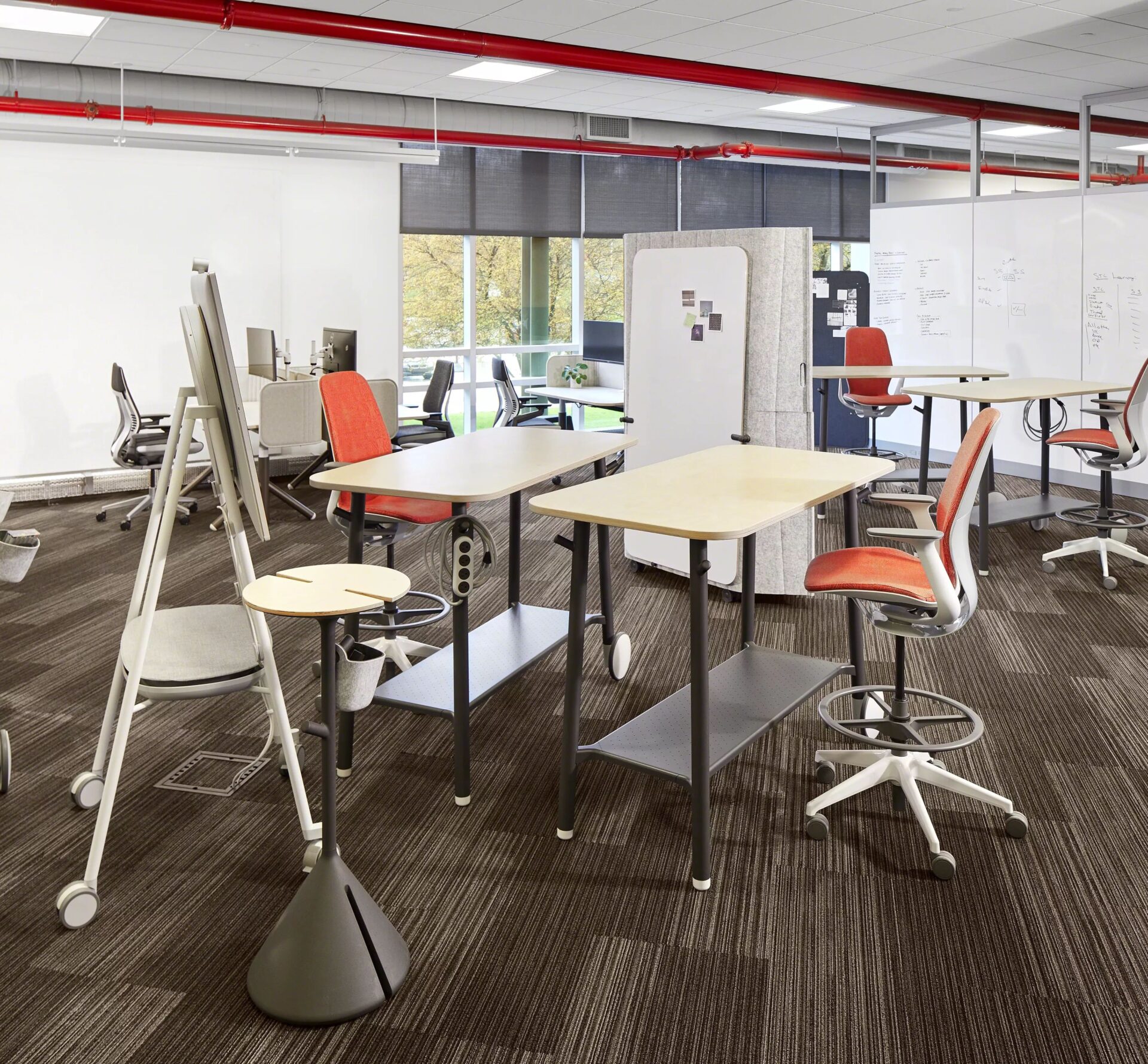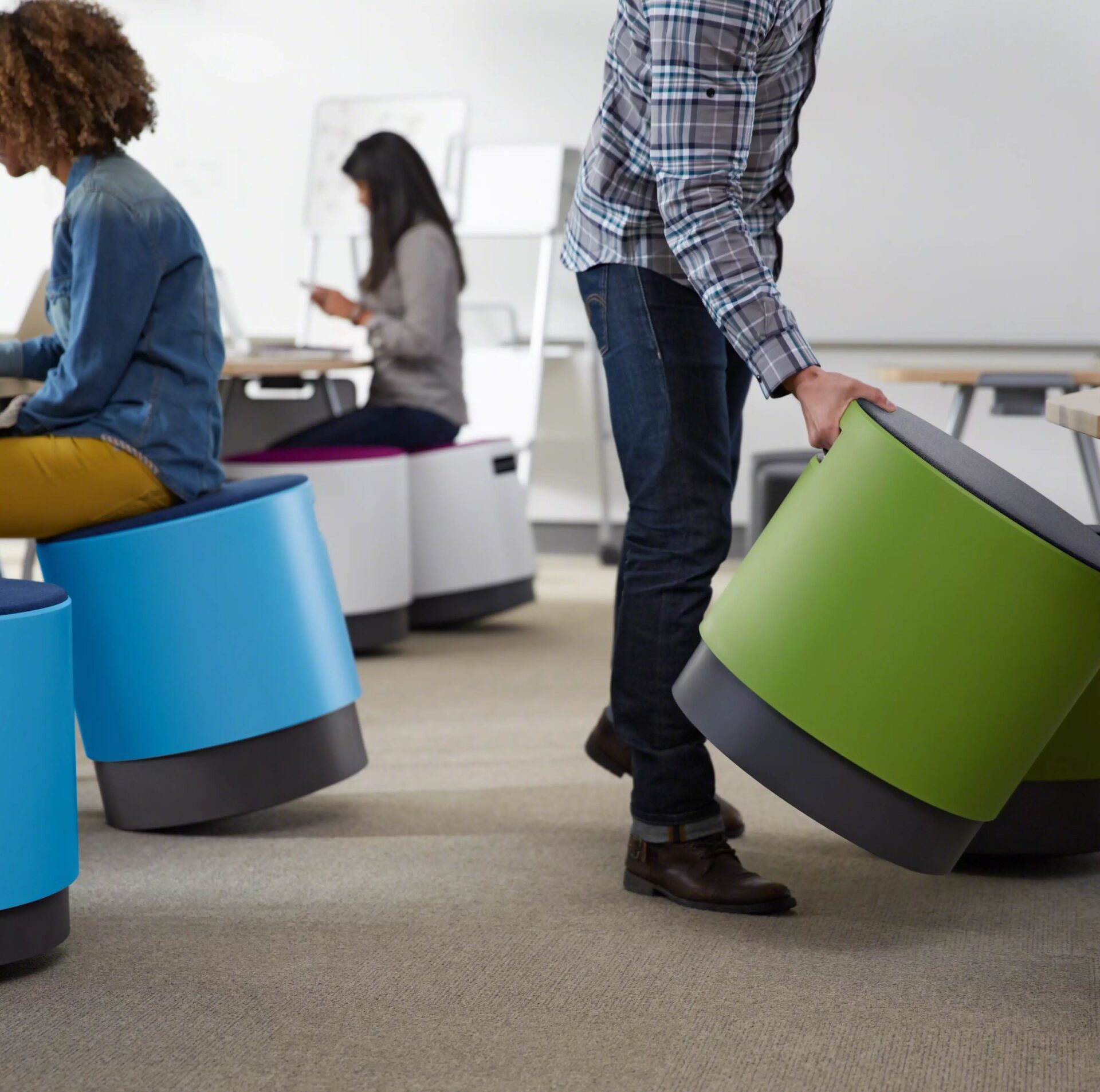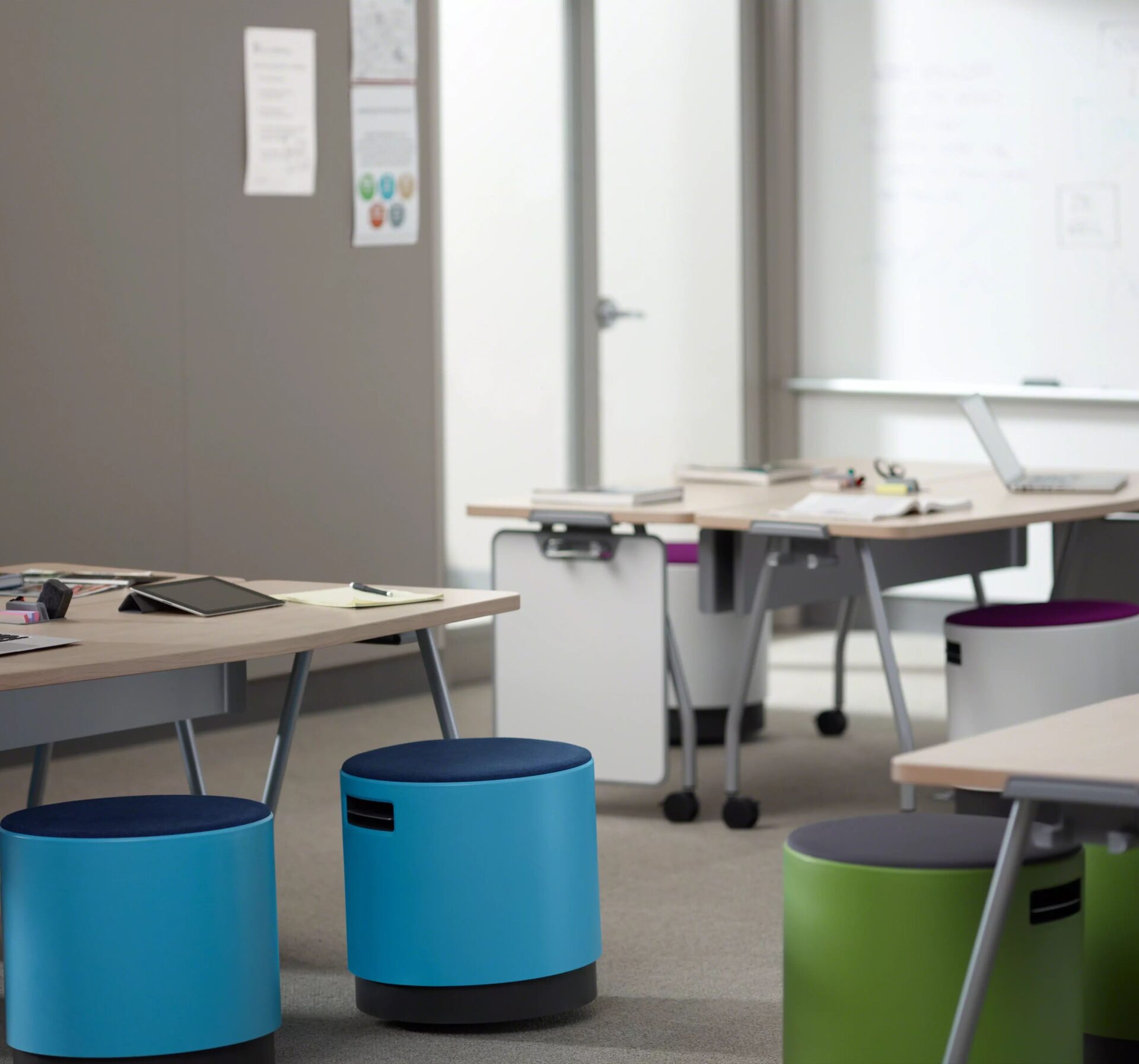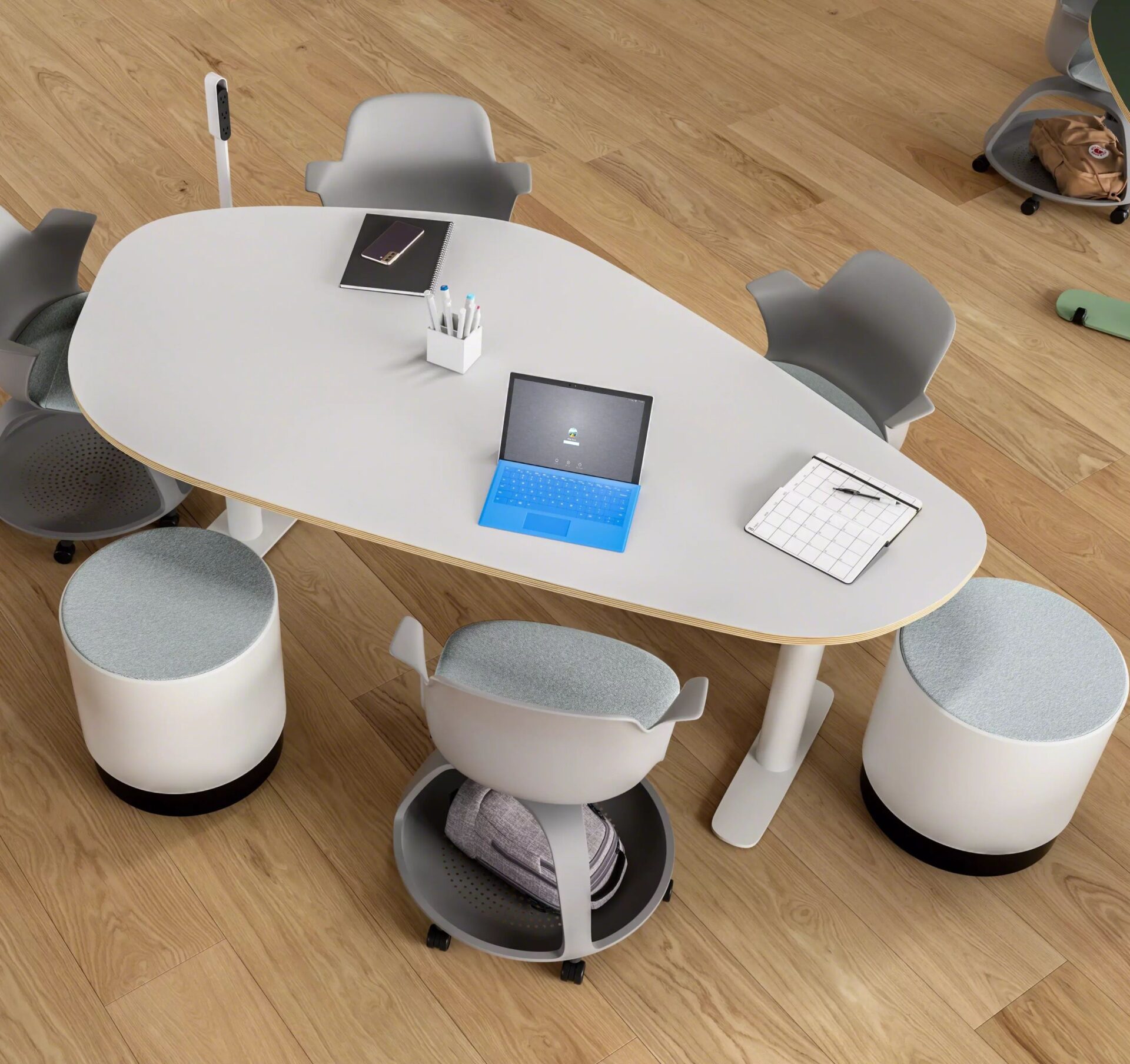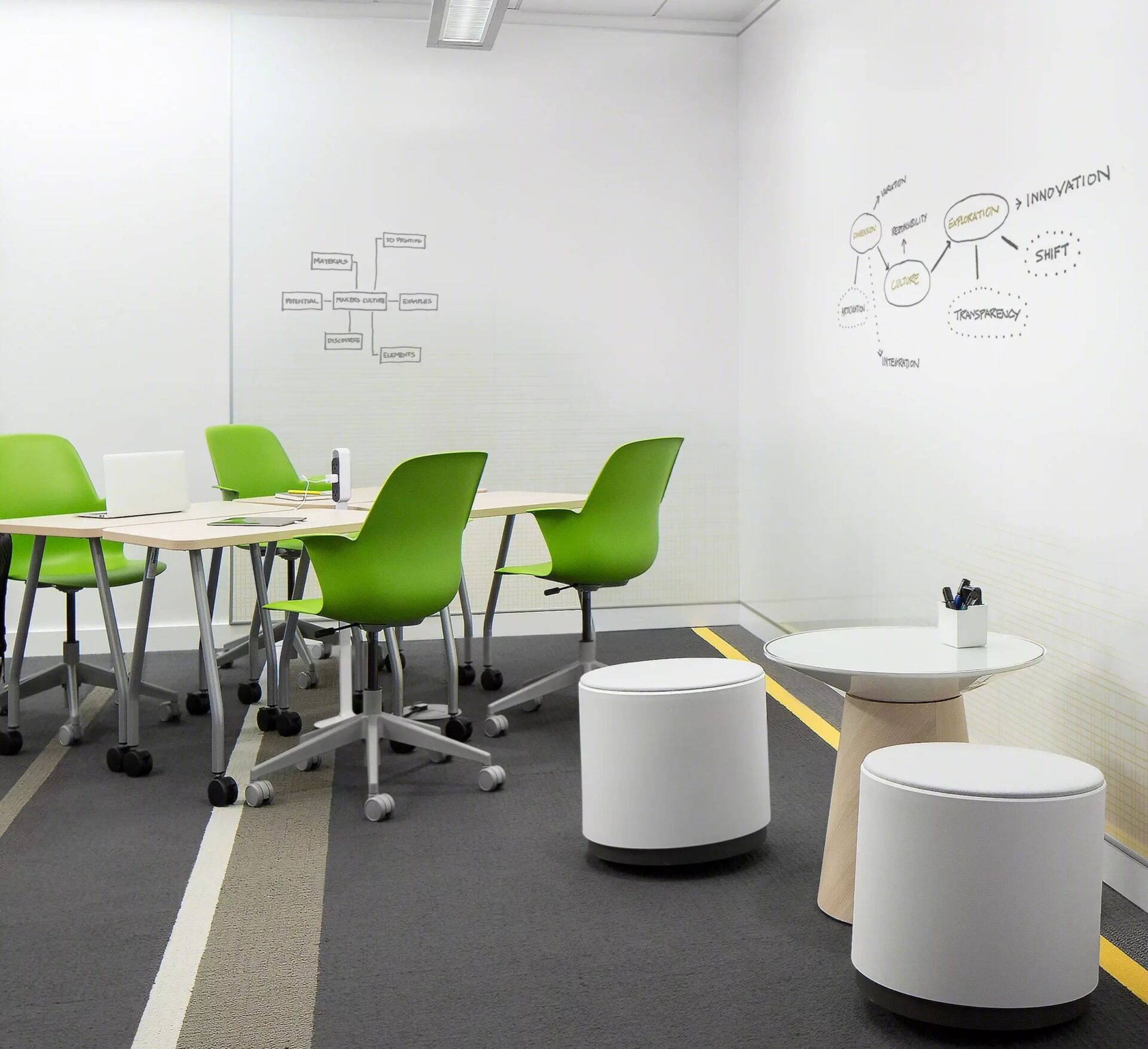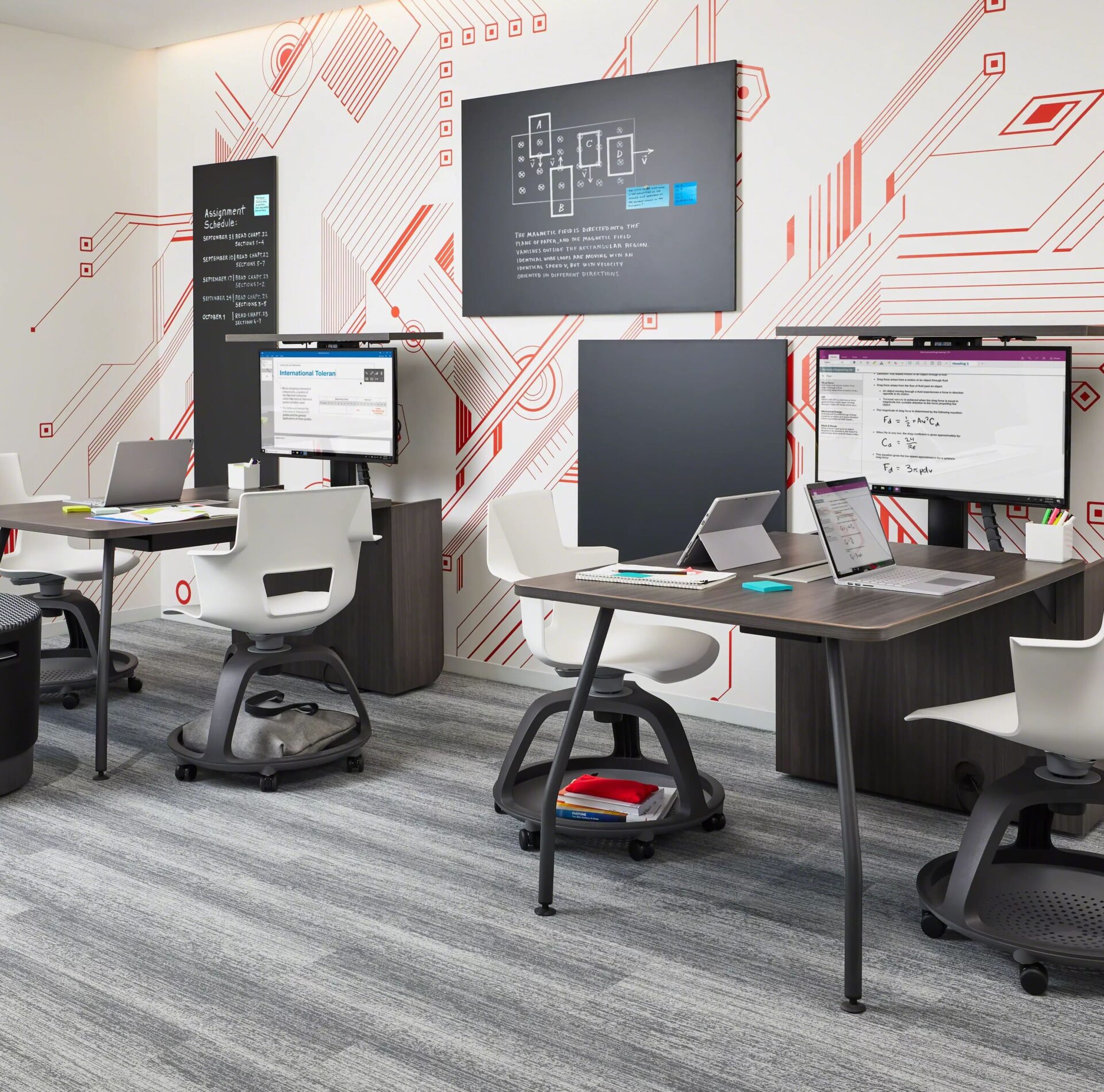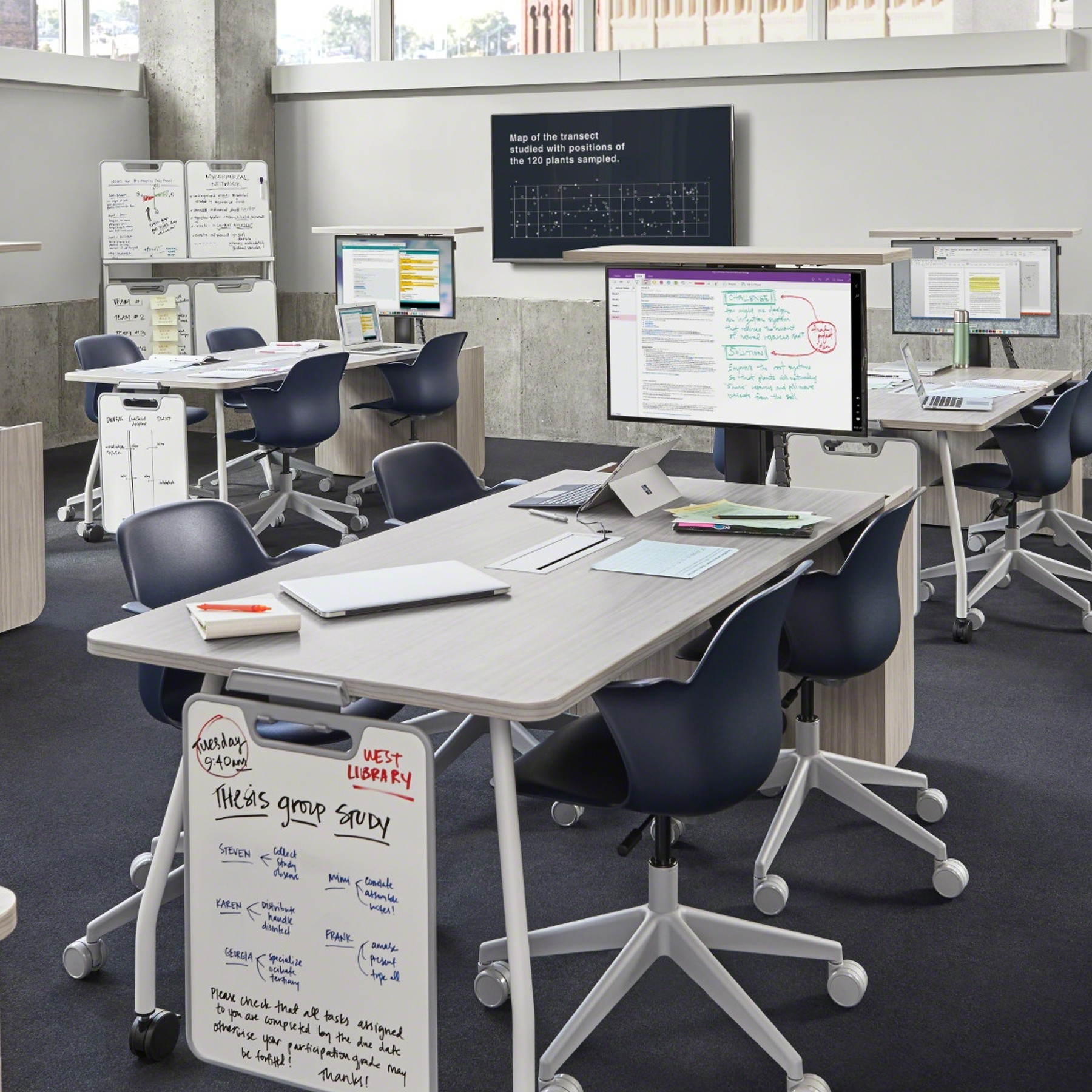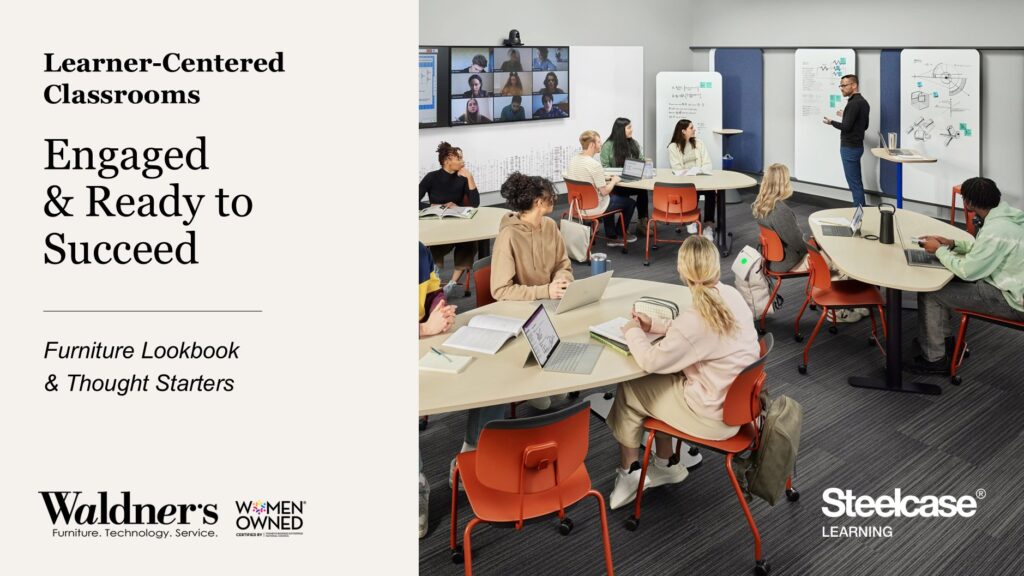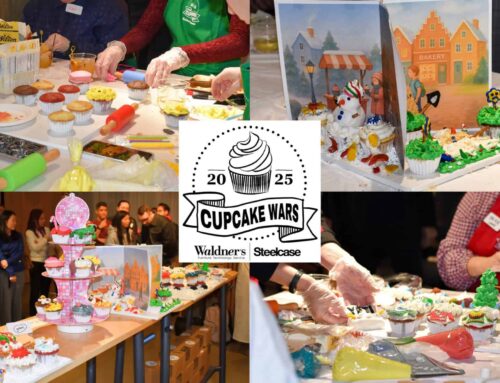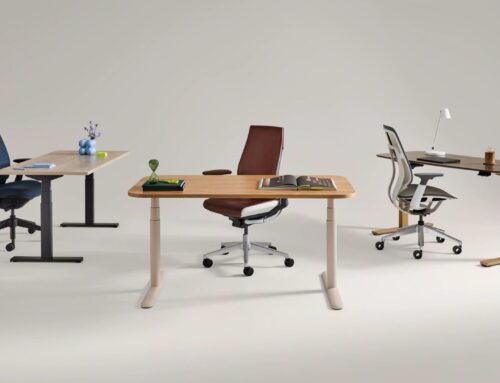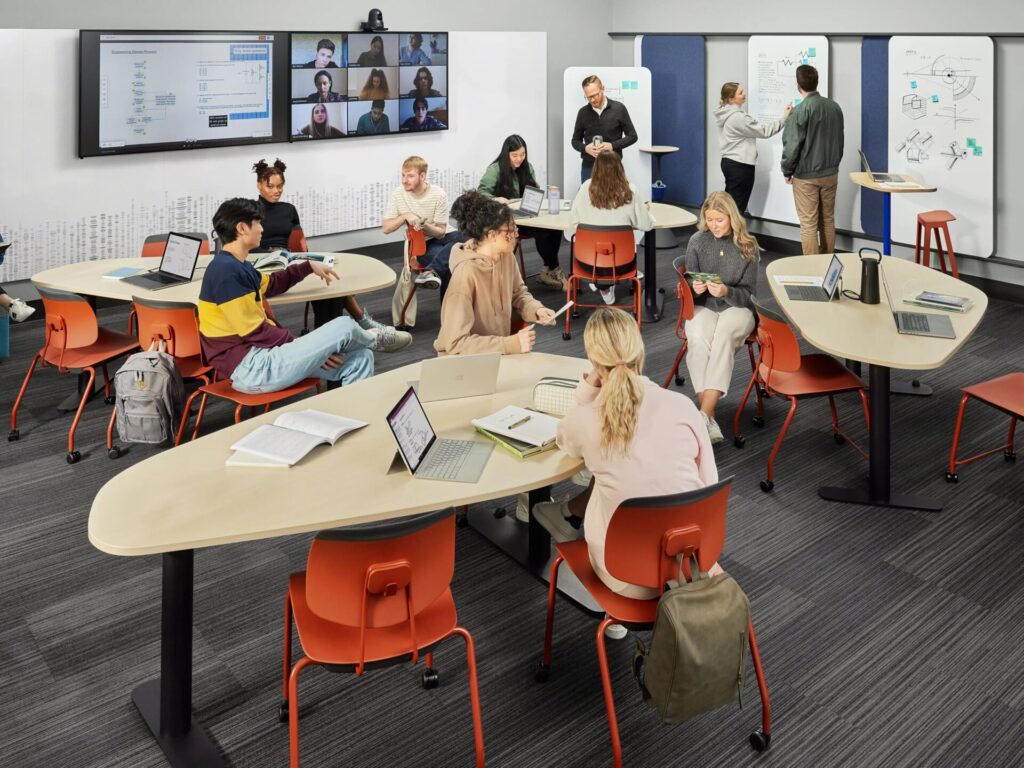
In today’s rapidly evolving educational space, a transformative shift is taking root in how students learn and thrive when they’re in control of their learning journey. Steelcase Learning’s recent research, involving over 16,000 students and 600+ educators across 112 K–12 schools, reveals a powerful link between learner-centered classroom design and increased student engagement.
Learner-centered classrooms are a flexible, inclusive space designed to empower students with choice and collaboration. This blog explores how intentional design can transform classrooms into dynamic ecosystems of creativity, inclusion, and motivation.
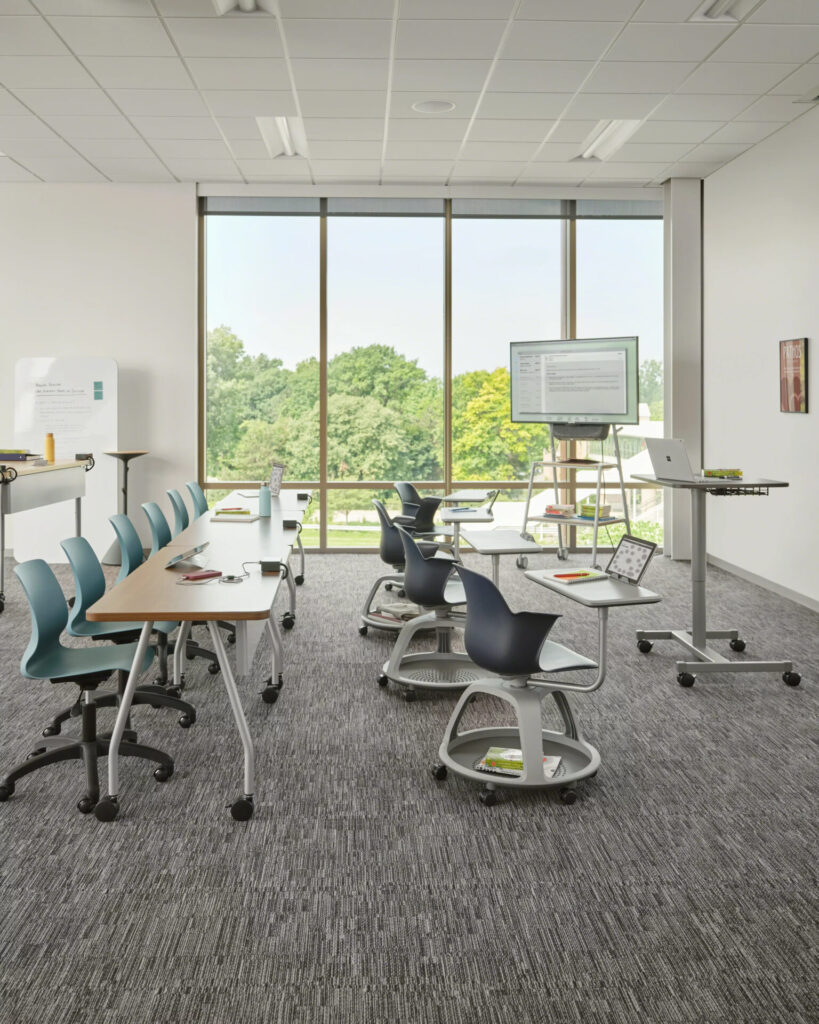
Why Learner-Centered Design Matters
Traditional classrooms often rely on fixed furniture and rigid layouts, which can decrease creativity and collaboration. In contrast, learner-centered environments are flexible, inclusive, and empowering, allowing students to choose how and where they learn best. These spaces foster:
Creativity & Collaboration:
Students feel more motivated & connected.
Wellbeing & Inclusion:
Physical comfort & psychological safety are prioritized.
Digital Integration:
Technology enhances learning but must be thoughtfully integrated.
Intentional Design:
Every element of the space supports active participation.
Key Design Insights from Steelcase
Steelcase identified four essential principles for learner-centered classrooms:
1.
Flexibility Enhances Learning:
Spaces that adapt to different teaching styles & needs: movement, choice, & engagement.
2.
Technology as an Educational Tool:
Thoughtful tech integration amplifies learning without overwhelming students.
3.
Inclusive Design for Development:
Comfortable, diverse seating & layouts support physical & emotional health.
4.
Bridging Vision & Practice:
Shifting to learner-centered design requires planning & collaboration between educators & designers.
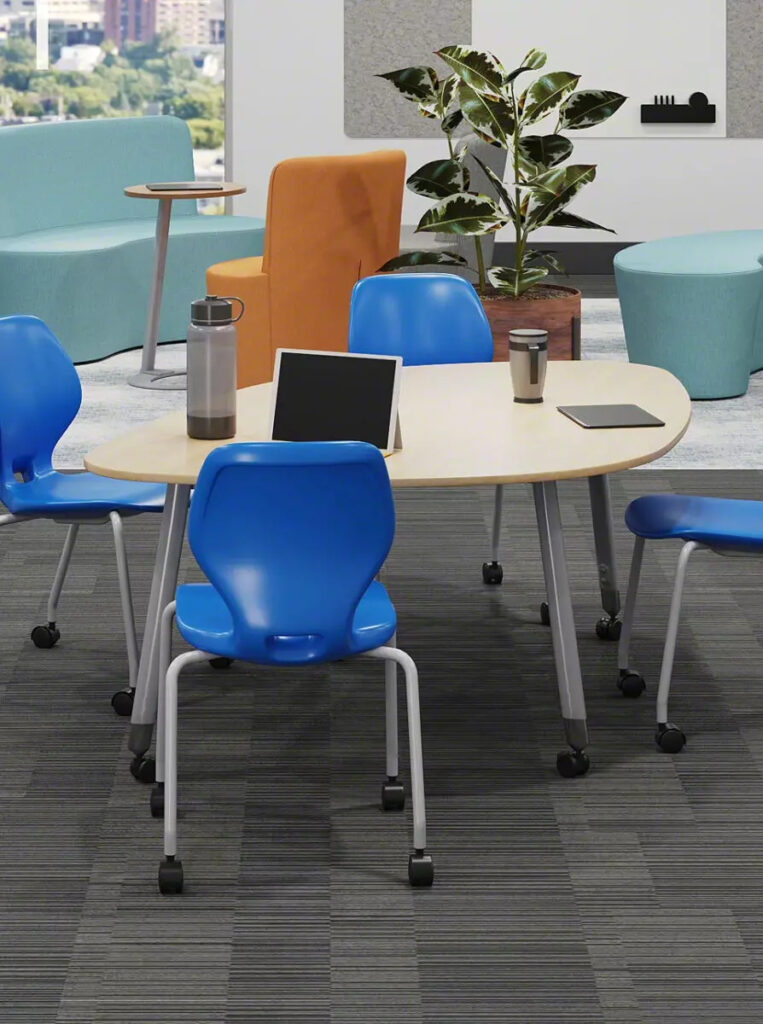
Classroom Plan Concepts
Steelcase shows several classroom types that embody the learner-centered classroom principles:
Multi-Purpose Classrooms
Adaptable layouts for lectures, group work, and brainstorming.
Active Breakout Classrooms
Zones for movement, interaction, and collaboration.
Makerspace Classrooms
Tech-rich environments for exploration and hands-on learning.
Flexible Seating Classrooms
Varied postures and settings for focus, teamwork, and comfort.
Product Suggestions for Learner-Centered Classrooms
To bring these concepts to life, here are Steelcase products that align with the learner-centered approach:
Reference:
https://www.steelcase.com/village/pages/sales-design/design-studio/design-studio-education-ideas/
https://www.steelcase.com/research/articles/topics/learning/revving-up-student-engagement-with-learner-centered-
classrooms/
https://www.steelcase.com/spaces-inspiration/classrooms/

